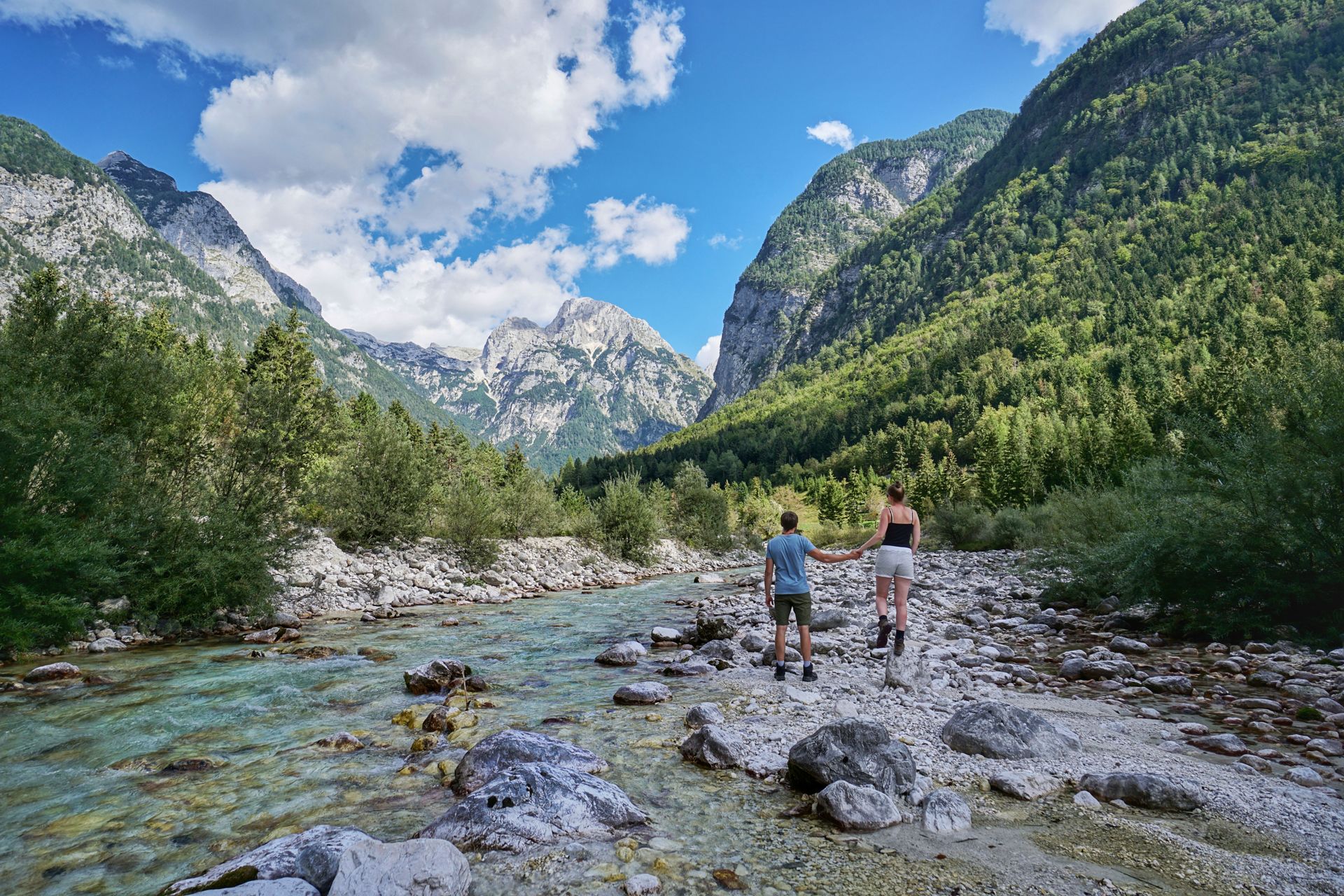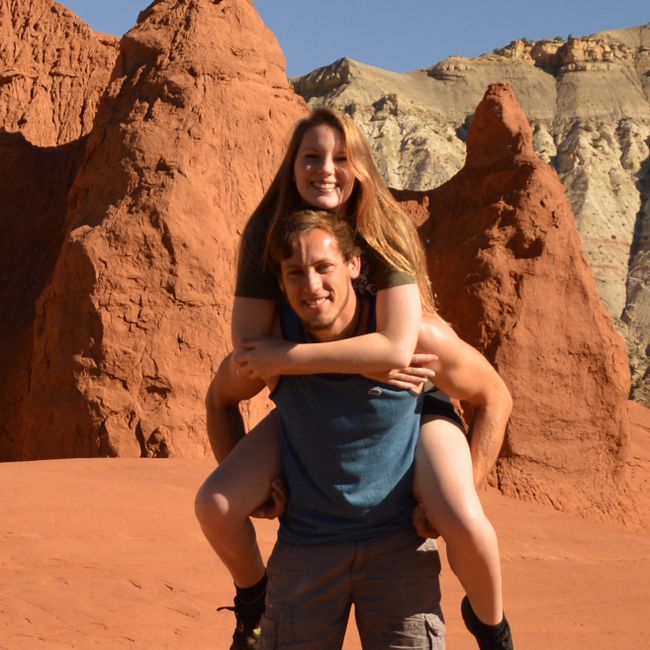5th Stop: New Zealand, Part 4: South Island
ထုတ်ဝေခဲ့သည်။: 27.04.2019
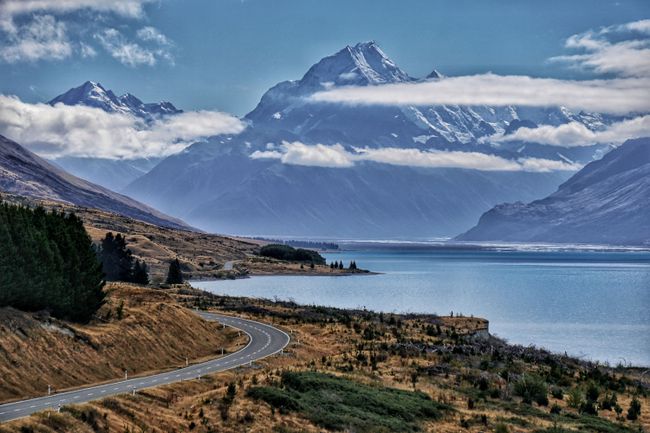
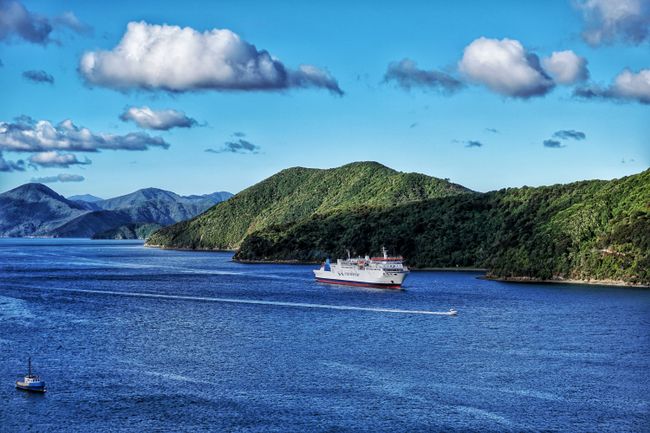
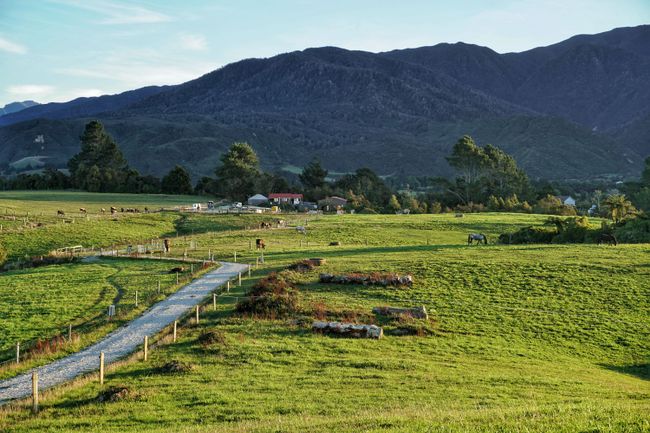
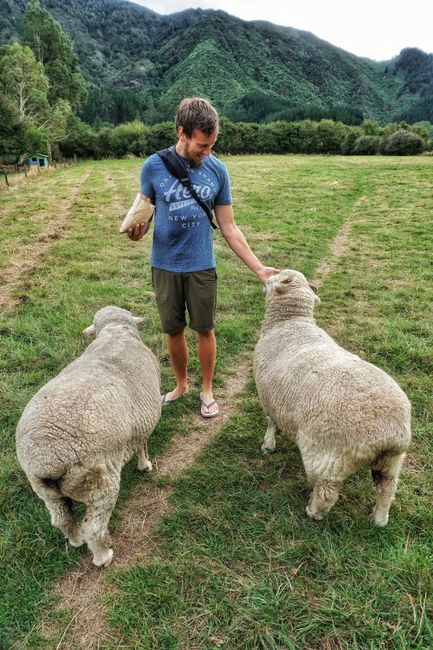
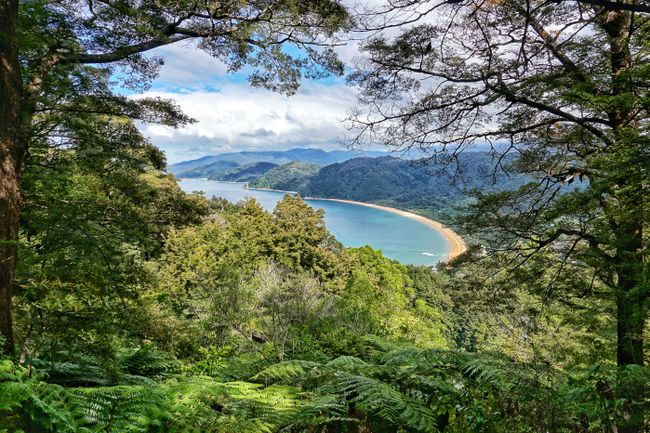
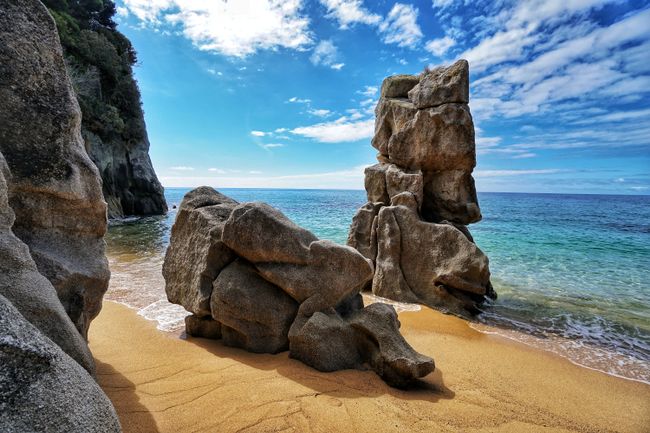
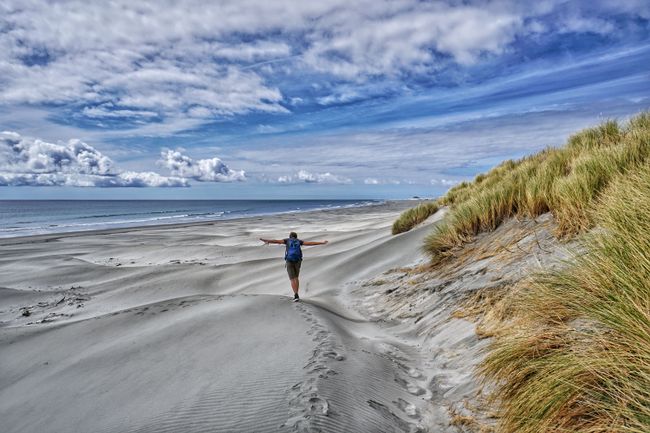
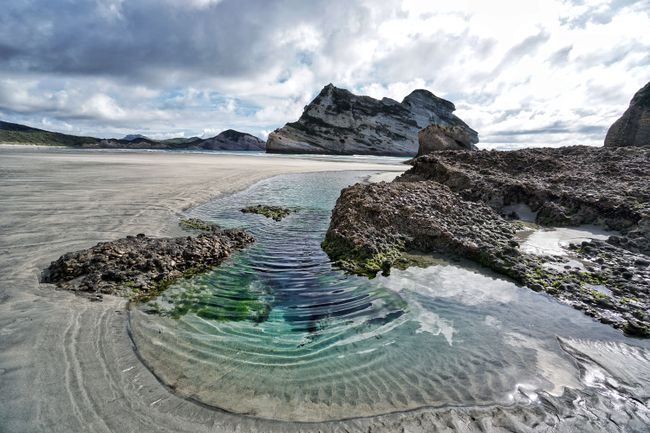
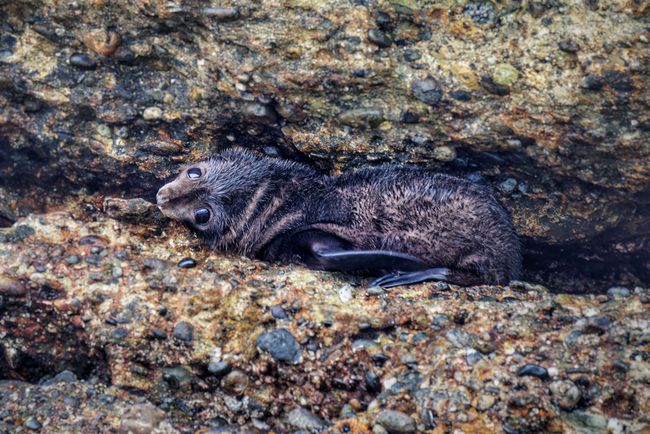
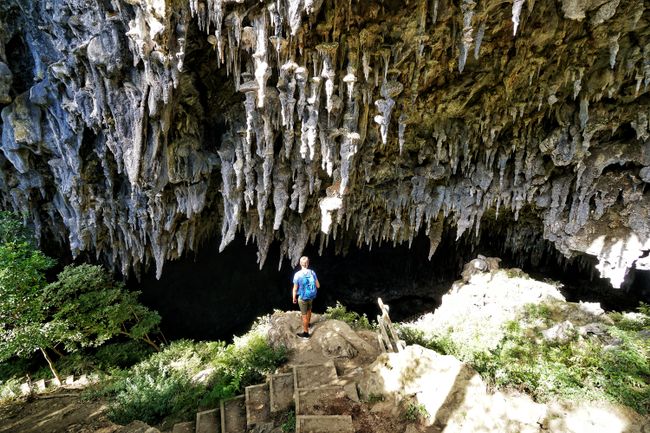
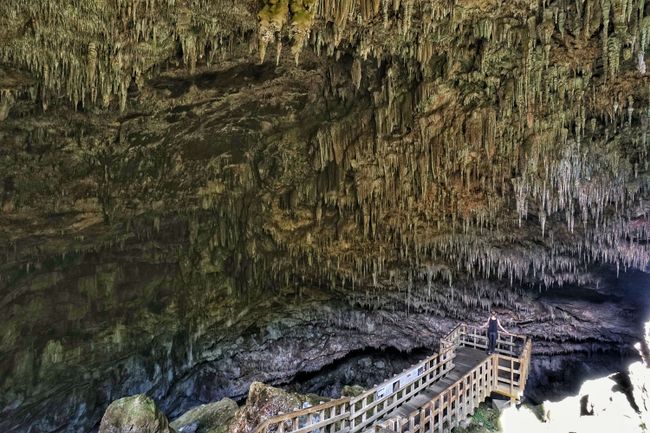
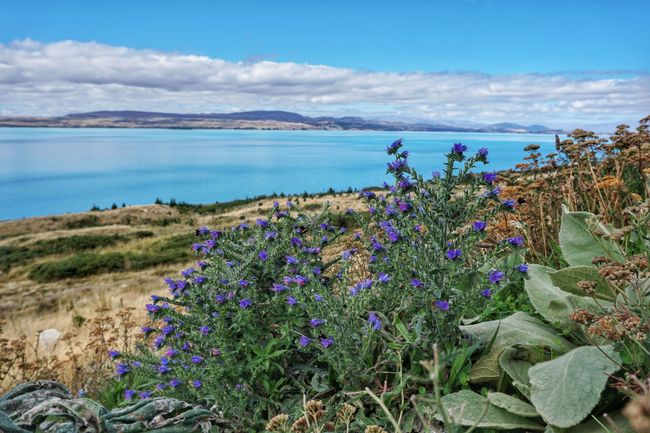
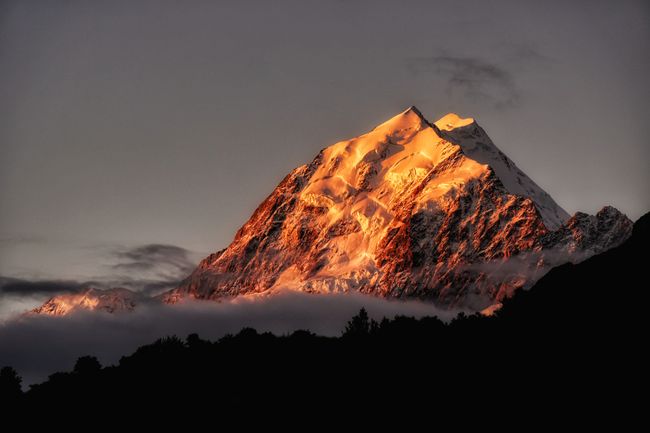
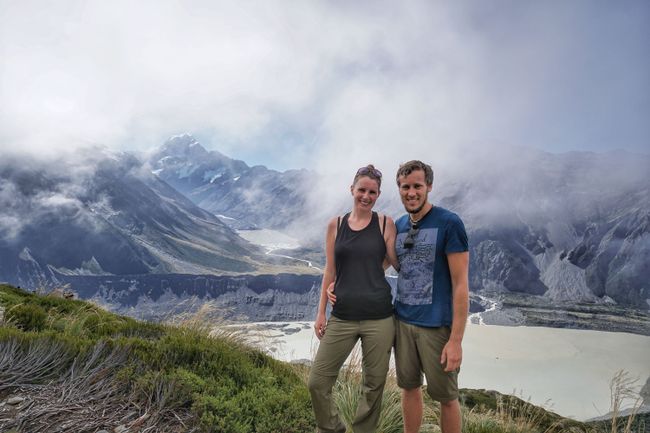
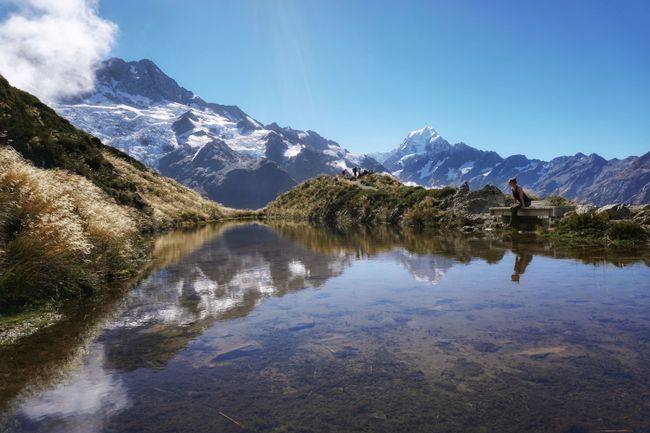
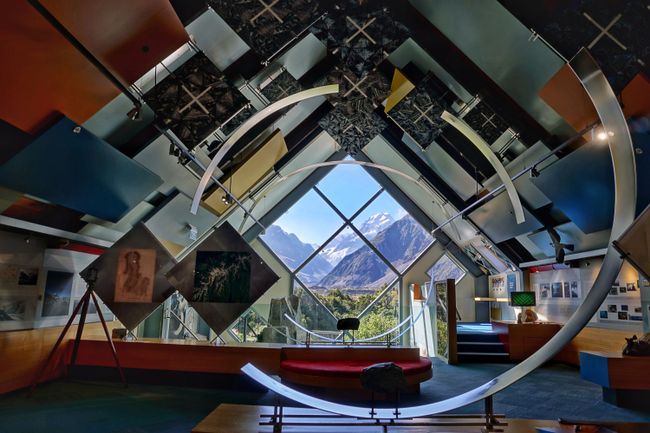
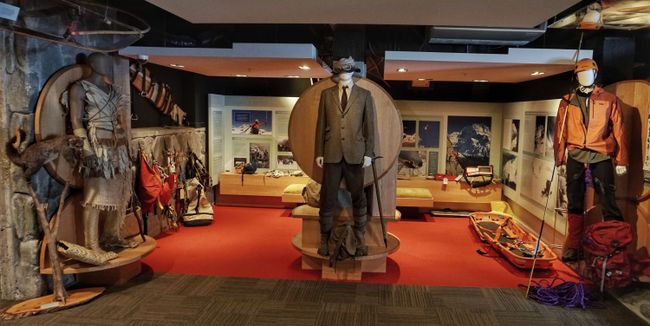
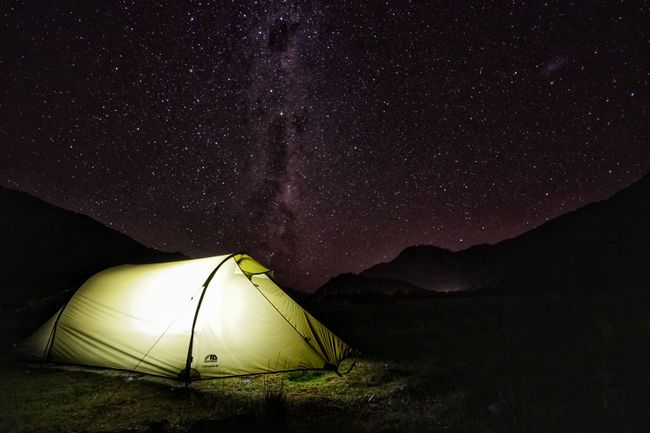
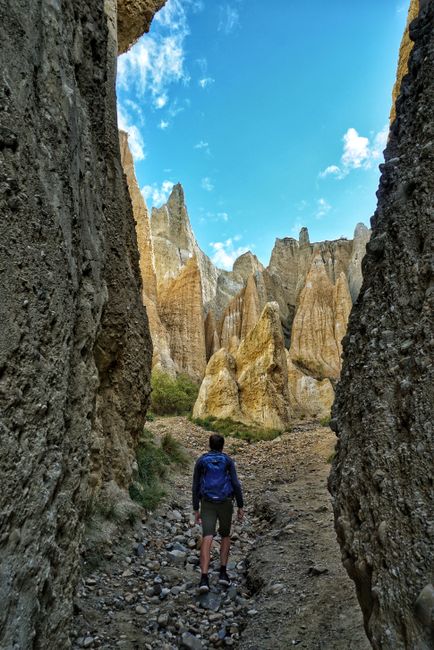
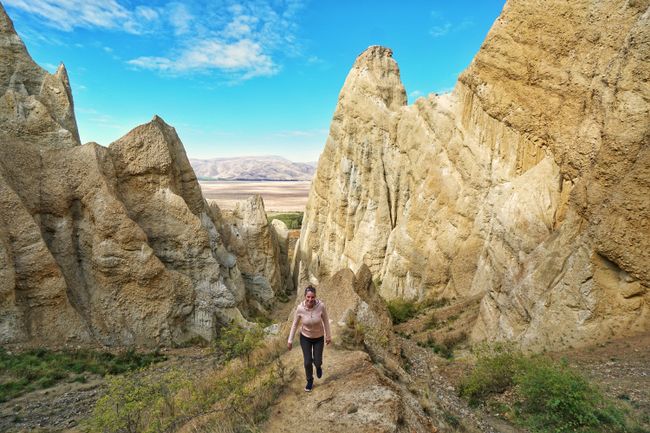
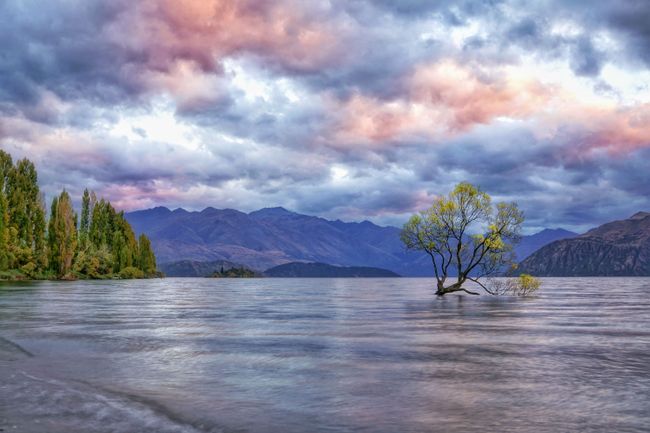
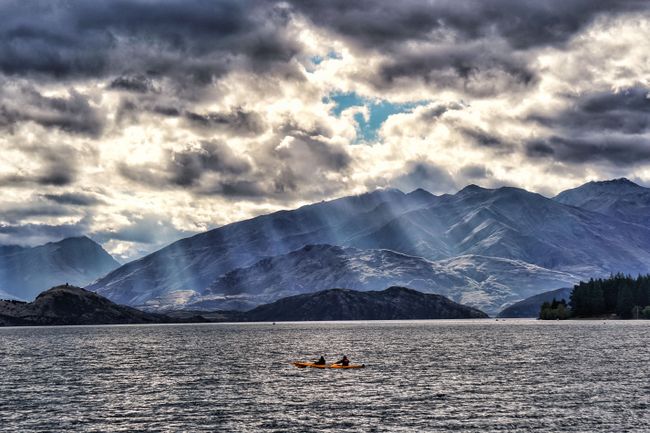
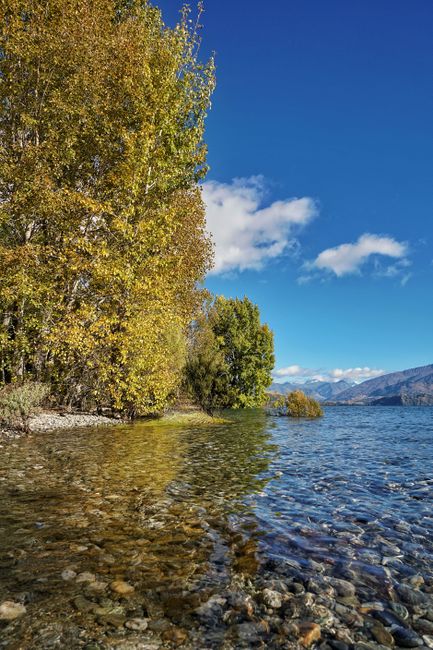

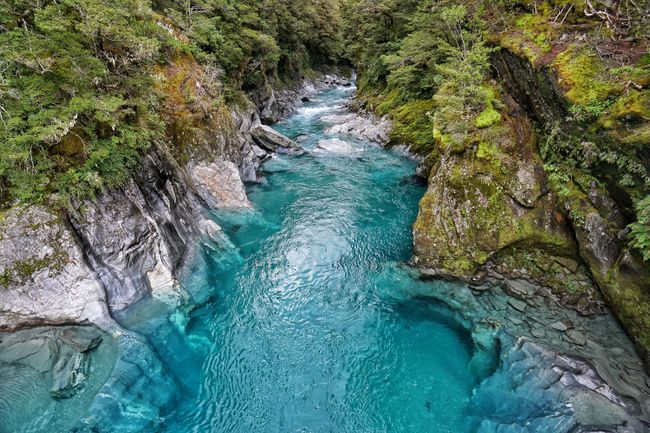
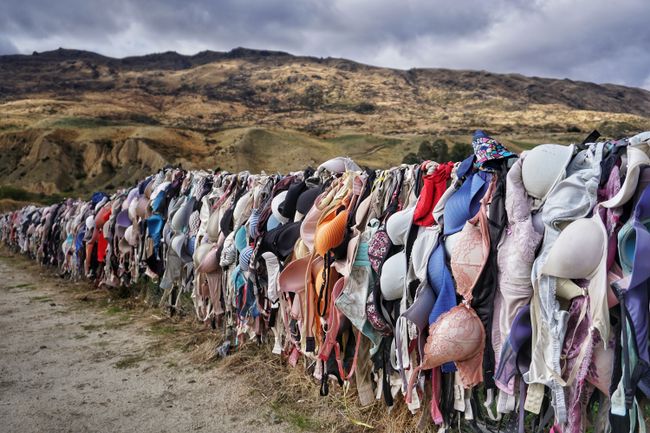
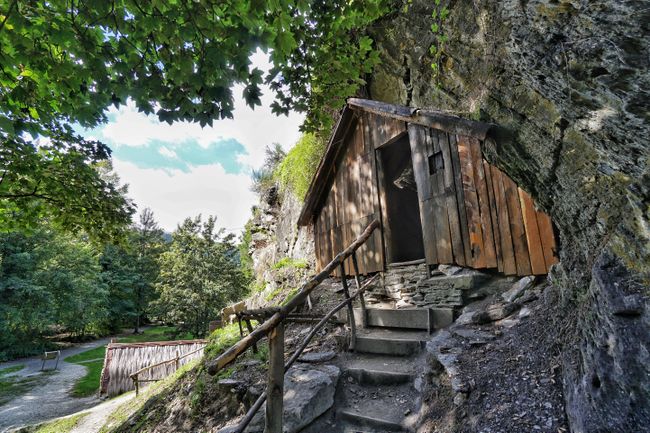
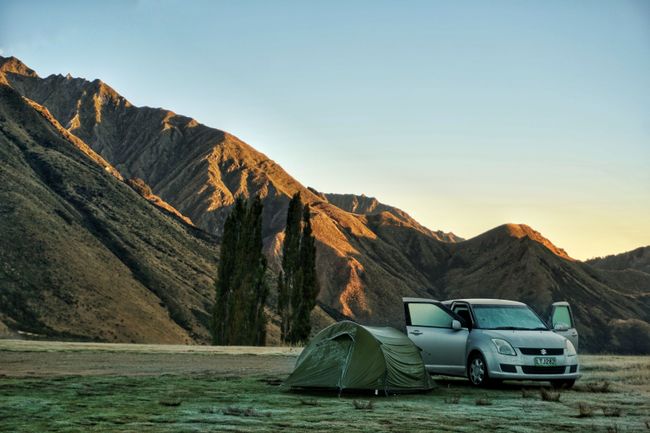
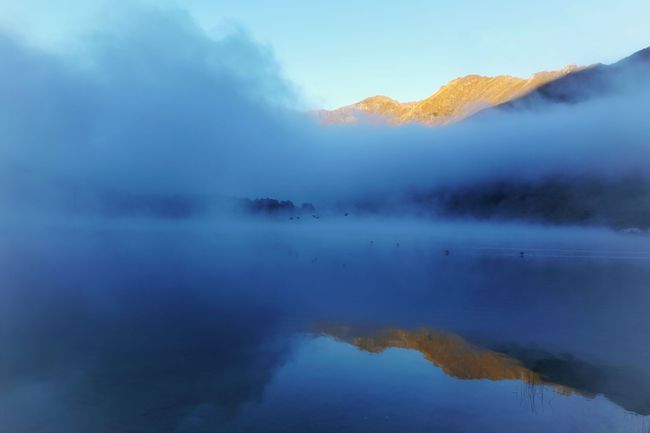
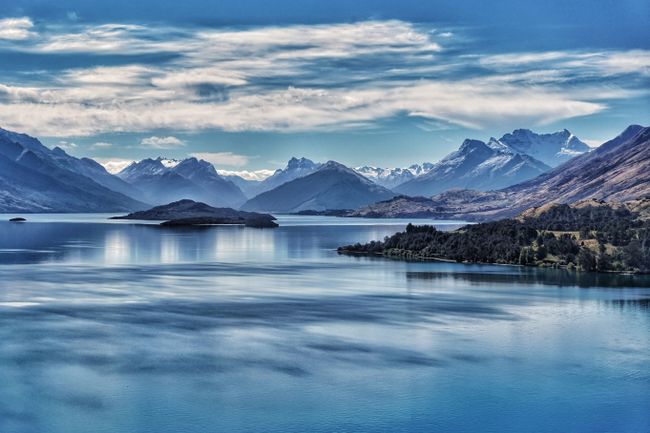
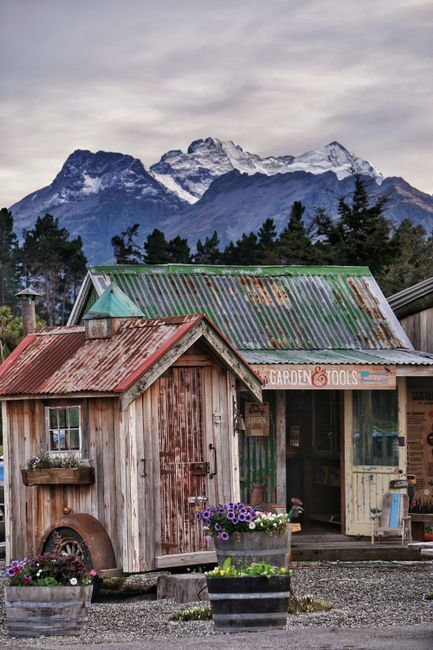
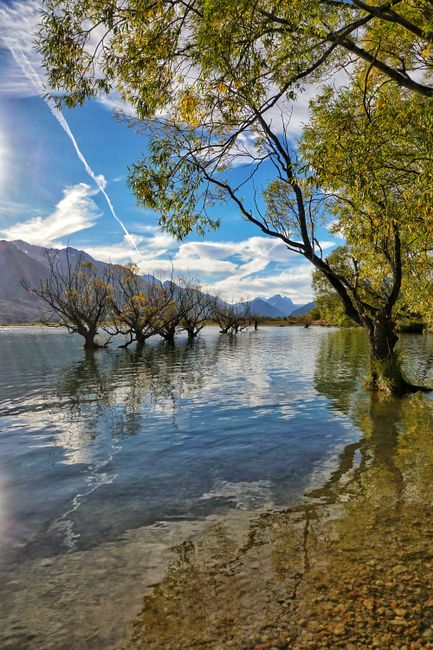
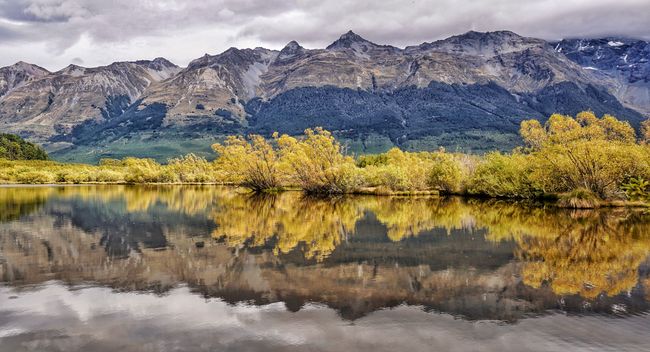
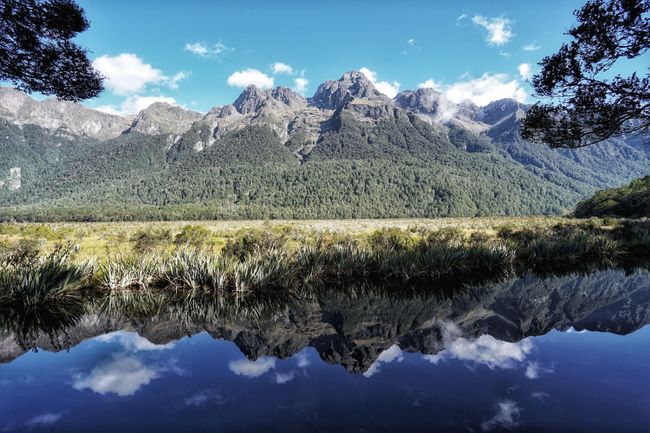
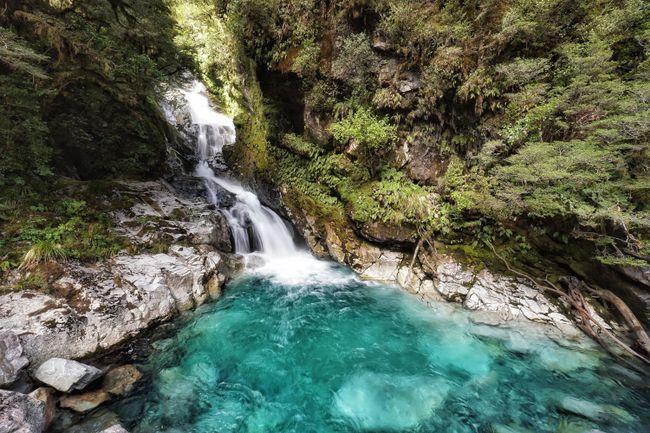
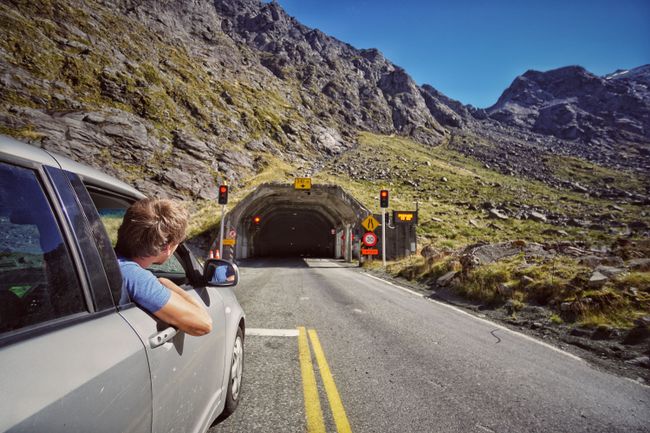
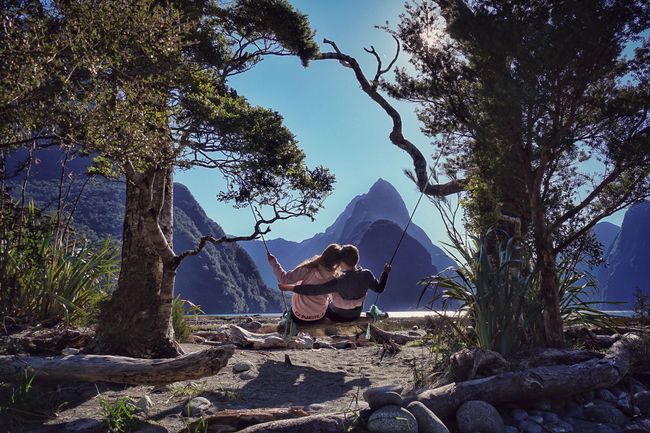
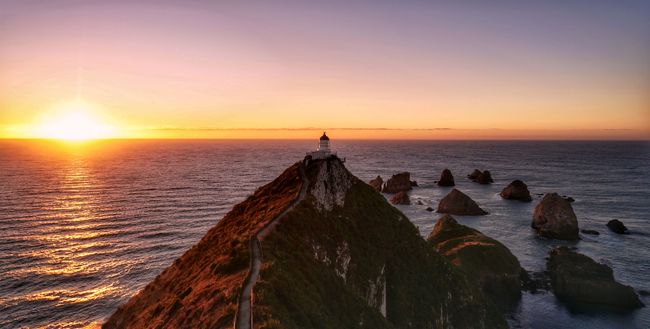
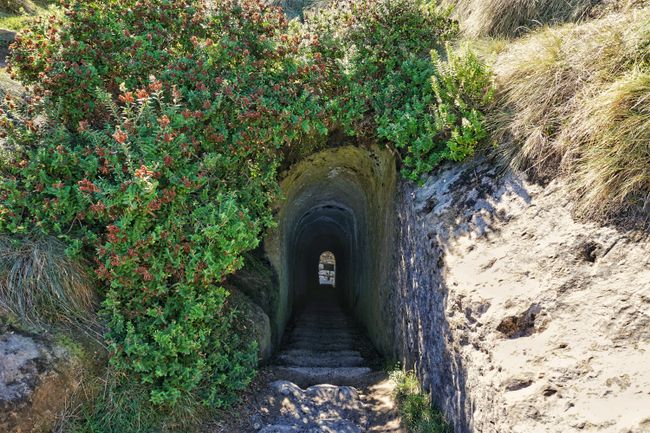
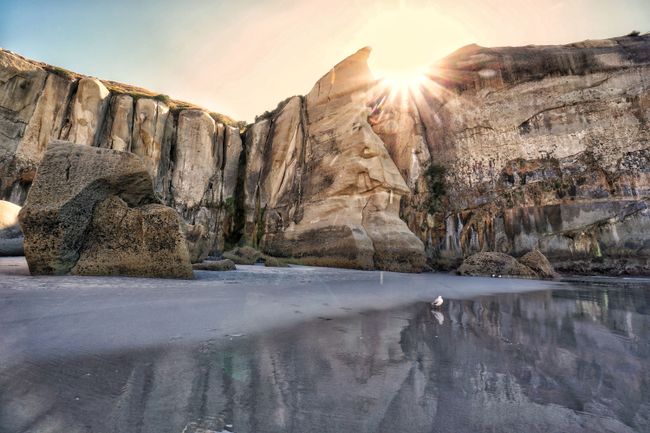
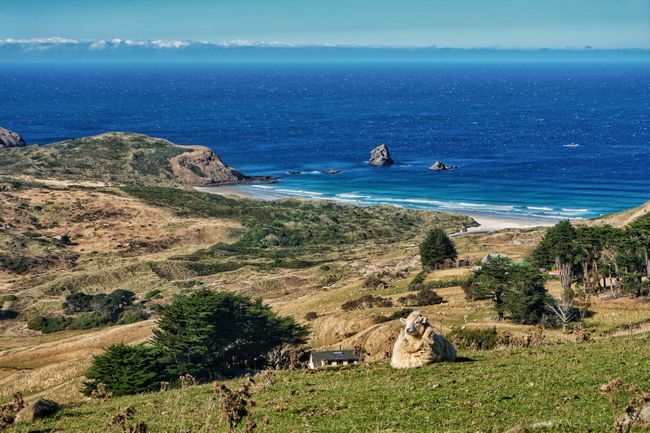
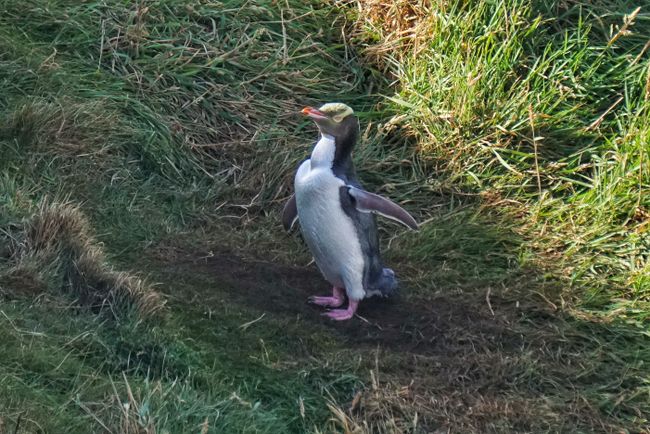
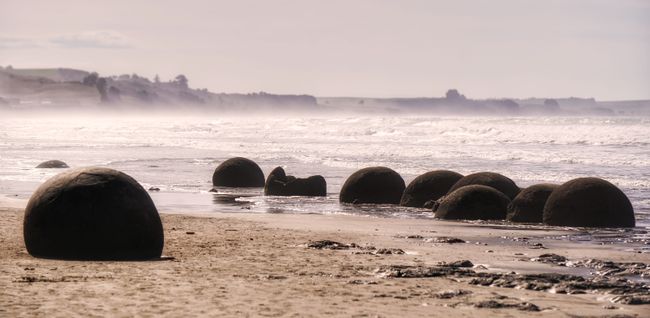
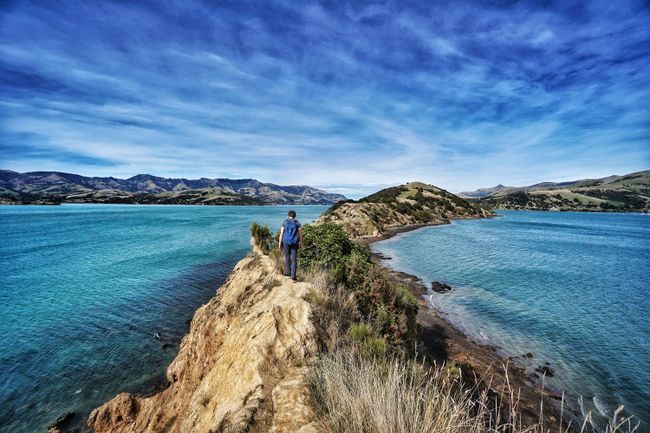
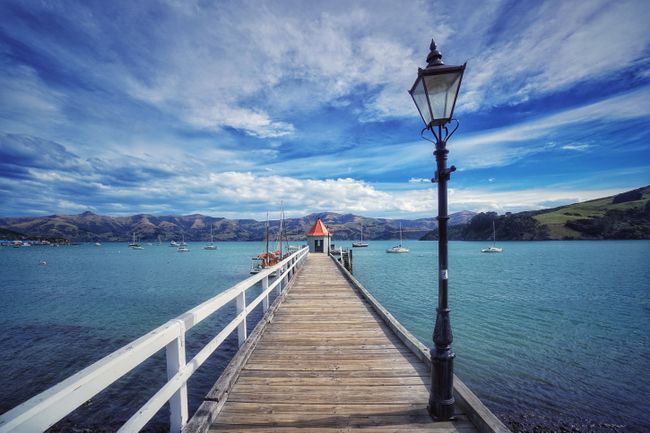
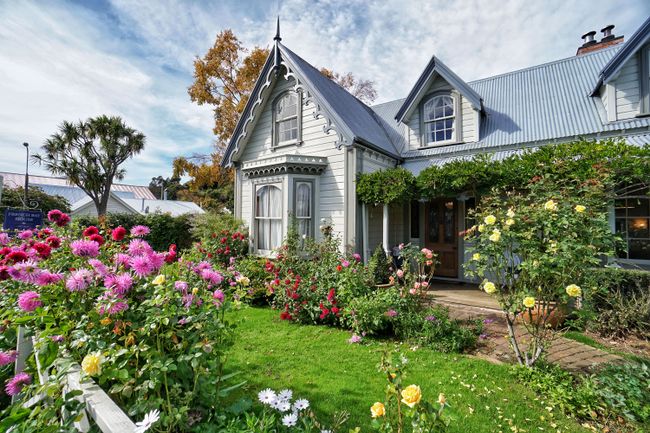
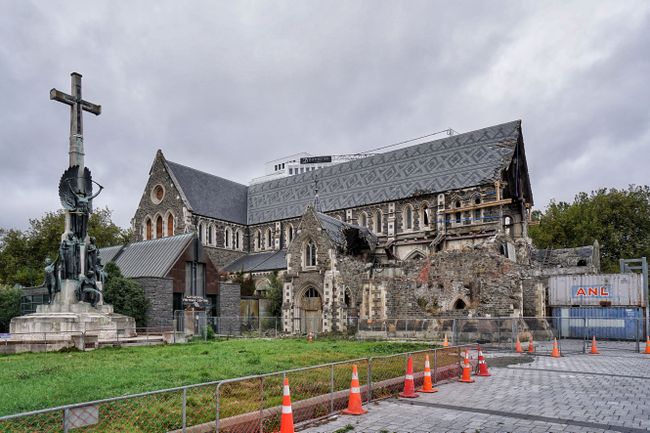
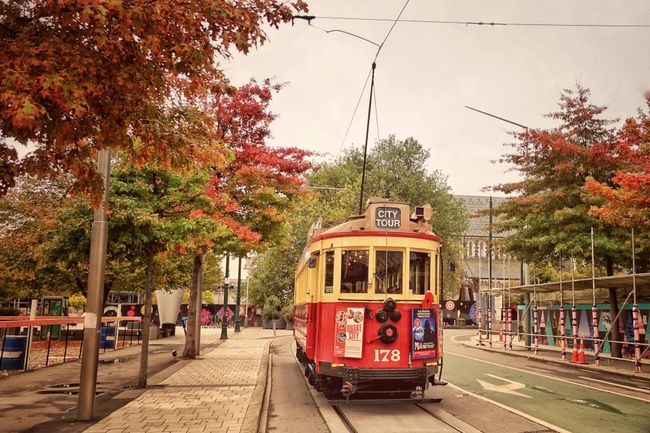
သတင်းလွှာကို စာရင်းသွင်းပါ။
When you come to New Zealand, one of the most frequently asked questions by everyone you meet is: Are you also going to the South Island? The myth has developed around the South Island that it is much more beautiful and worth seeing than the North Island. Admittedly, the South Island of New Zealand is simply breathtaking and much less populated, making it even more natural than the North Island. But as you might have noticed from the blog, we are just as excited about the North Island.
Nevertheless, we were naturally drawn to the wild expanses of the South Island with its picturesque beaches, rugged mountains, mystical fjords, and starry nights.
To get to the South Island, you have to endure a 3-hour ferry ride through the Marlborough Sounds. What a tough fate, especially in bright sunshine and calm seas, like us. We even saw a dolphin, although the little guy only showed himself briefly.
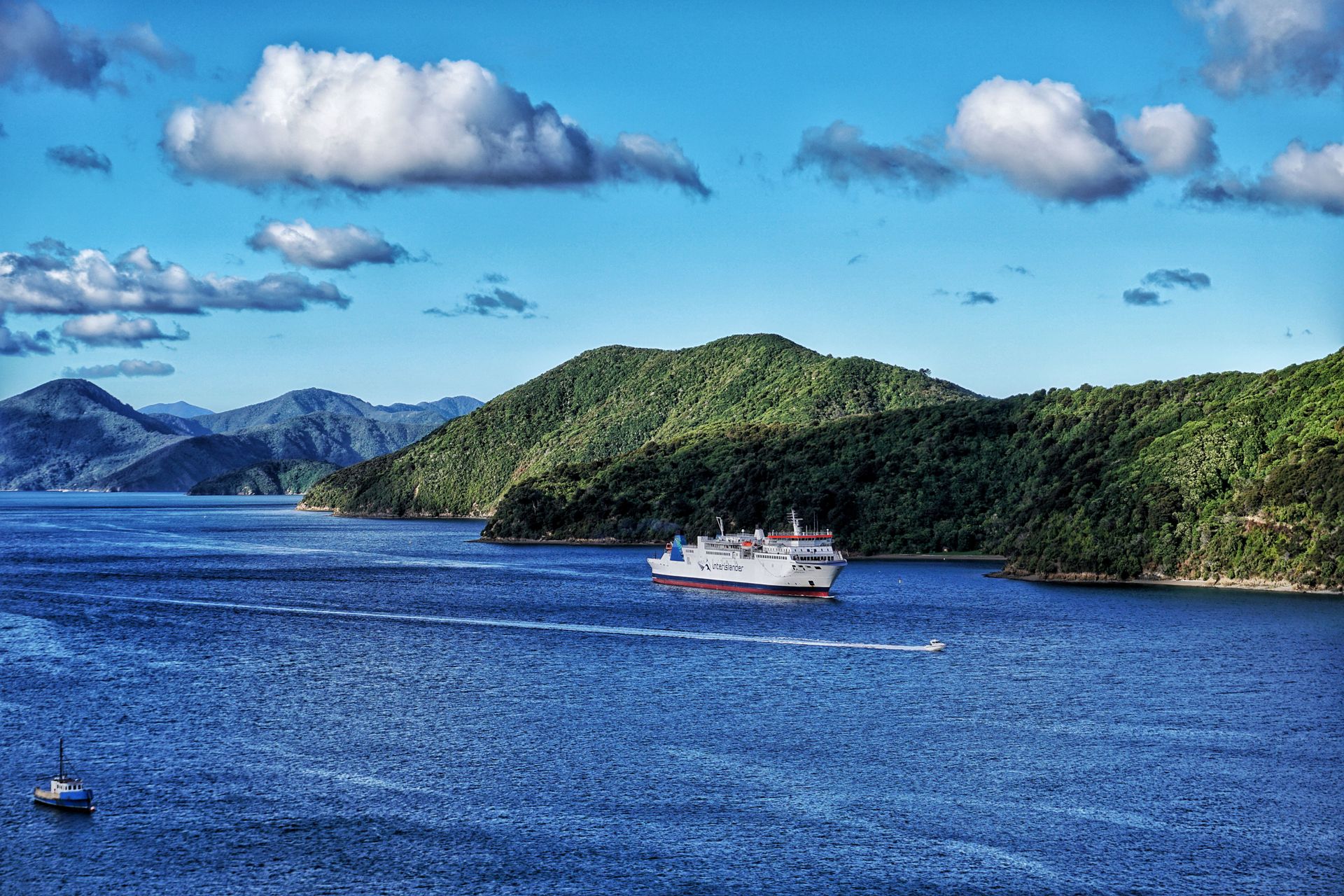
Afterwards, we first drove to the northern part of the South Island, to Abel Tasman National Park and Golden Bay. There you can experience beautiful bays with beaches, dense forests, and waterfalls. Due to an extreme wasp infestation and overpriced campsites in the national park, we decided to camp outside and only take day trips into the park and the surrounding area. As a result, we spent the night at an amazing campsite on the horse farm of a German emigrant, who lives almost self-sufficiently and leaves most of the work to her woofers (these are young tourists who work for accommodation and food).
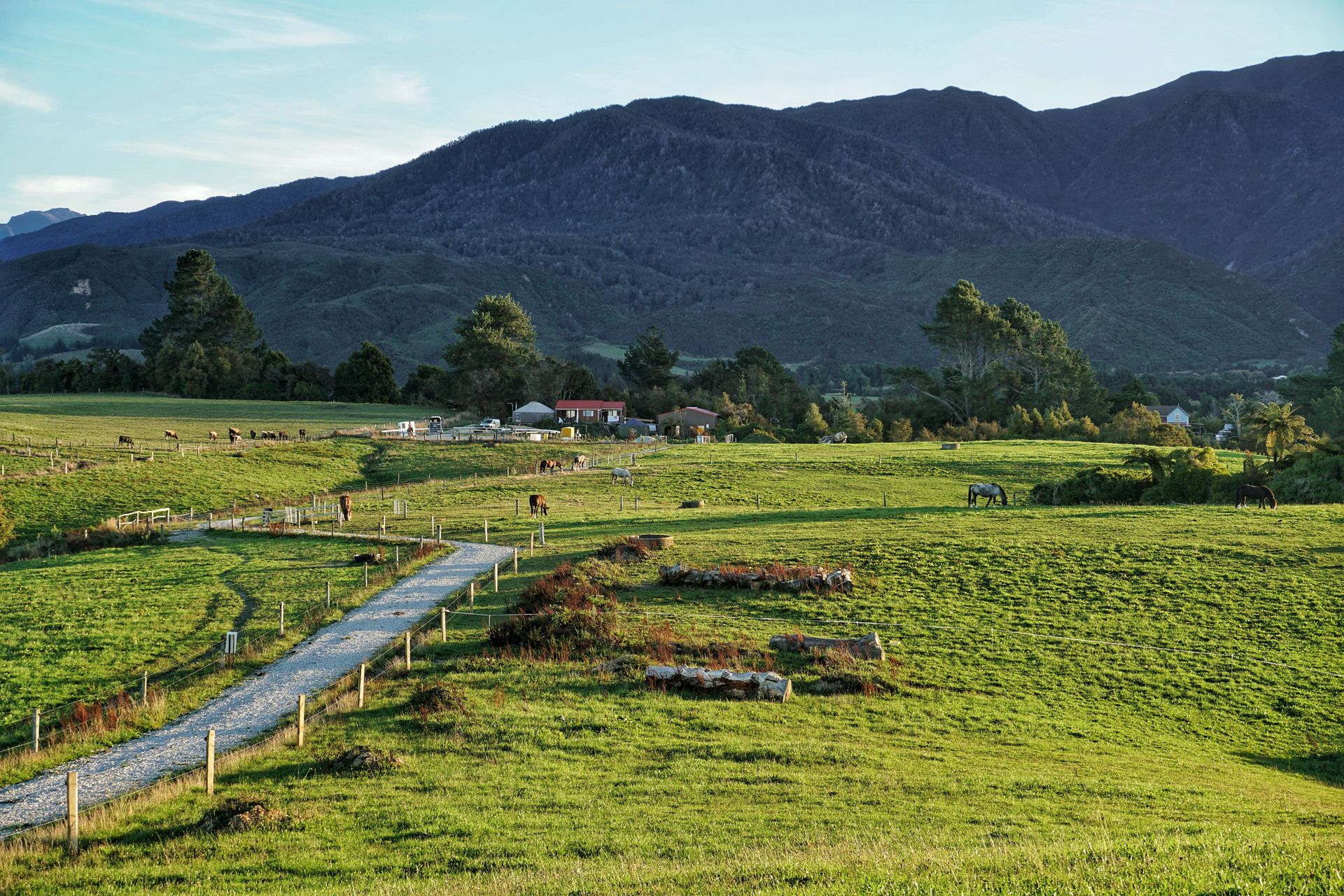
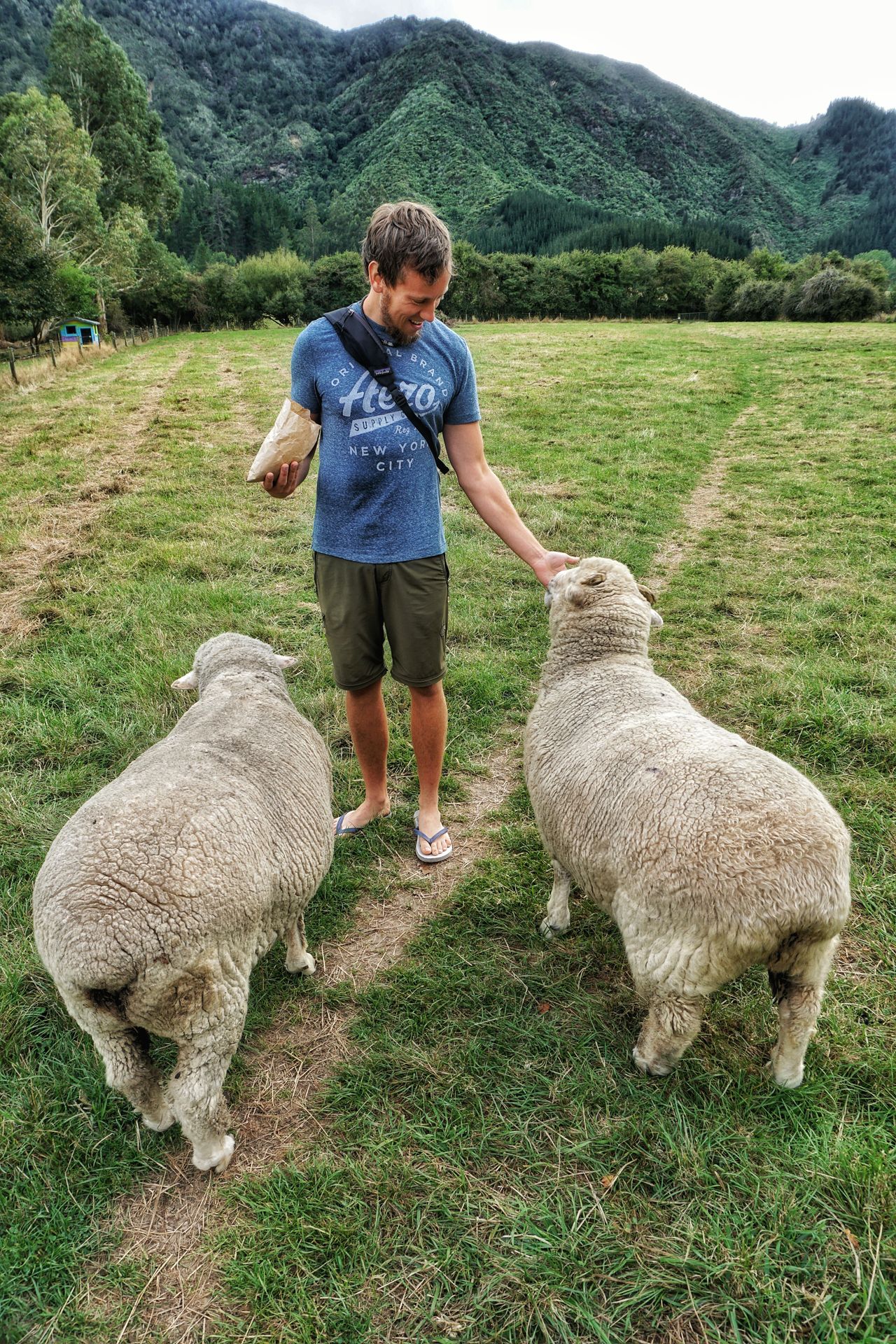



The absolute highlights of our time in this area were the baby seals at Wharariki Beach, playing in small pools on the beach at low tide, and the Rawhiti Caves, over 1 million years old stalactite caves that contain just as many stalactites.
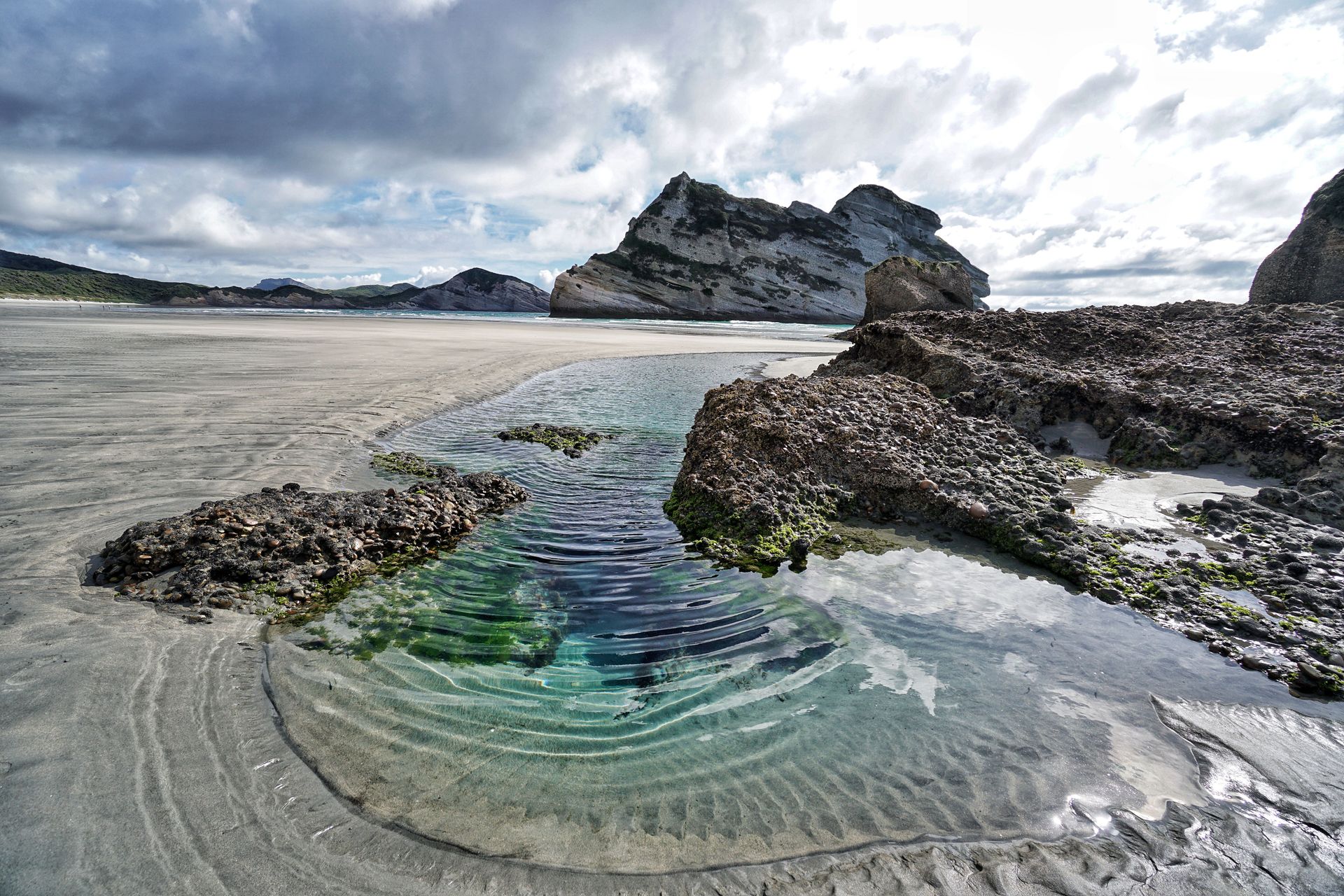
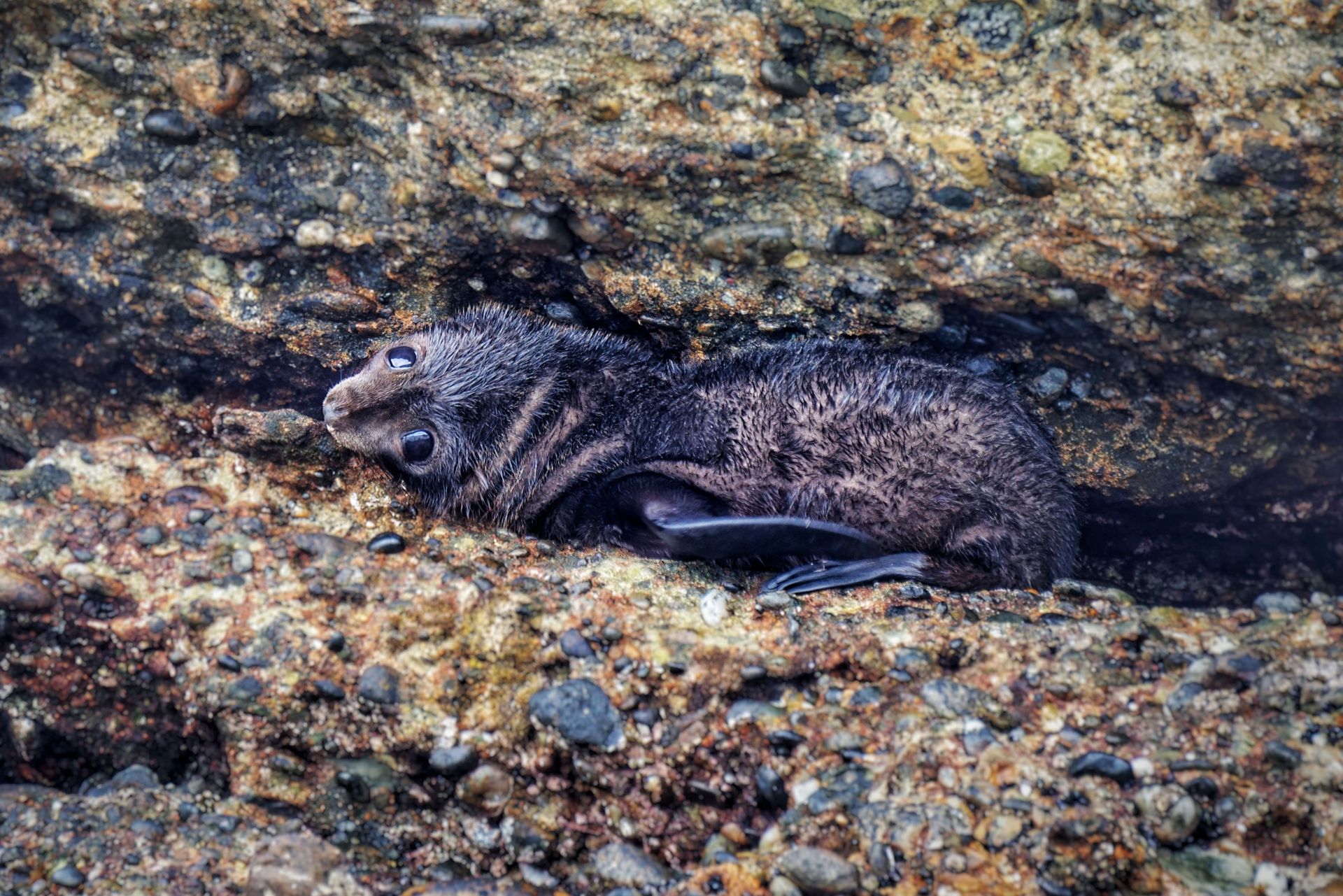

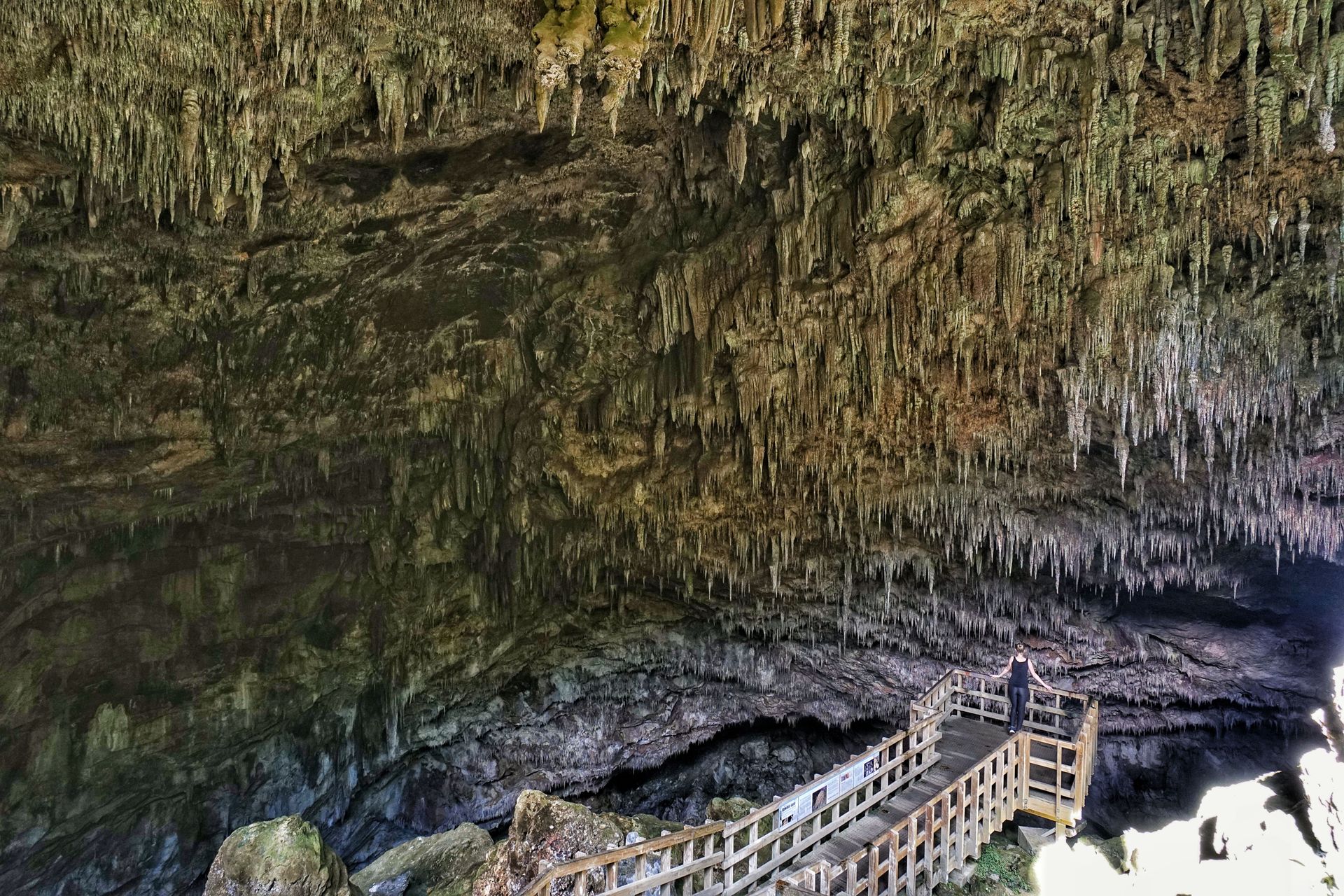
For our onward journey, the question arose: Do we risk driving to the often rainy West Coast of the South Island or do we skip this section and enjoy better weather in the center of the island? Without knowing the weather forecast, we decided to skip the West Coast and drive to Hanmer Springs instead. That was the best decision in a long time! While we relaxed in the thermal baths of Hanmer Springs in beautiful weather, the West Coast was hit by massive rainfall of over 1m in 24 hours. This resulted in the only bridge connecting the West Coast to the southern inland being washed away, and for weeks, no one could continue traveling from the West Coast to the south. That would have been a huge challenge for us in the tent. So we spent cozy days in Hanmer Springs, where perhaps you don't necessarily have to go, and then continued on dry ground to one of our favorite places in New Zealand: Mount Cook.
An adventure in Mount Cook National Park already starts with the journey there. Because on the way to the highest mountain in New Zealand, where Edmund Hillary trained for his Everest expedition, you pass by probably the most beautiful lakes in New Zealand. Lake Tekapo and especially Lake Pukaki are radiant turquoise, gigantic lakes, which owe their color to the mineral-rich water from the glaciers that feed them. The road along Lake Pukaki leads directly into the valley of Mount Cook and provides a spectacular view over the radiant lake to the high glaciated mountains. Without a doubt, this drive is our favorite in all of New Zealand!

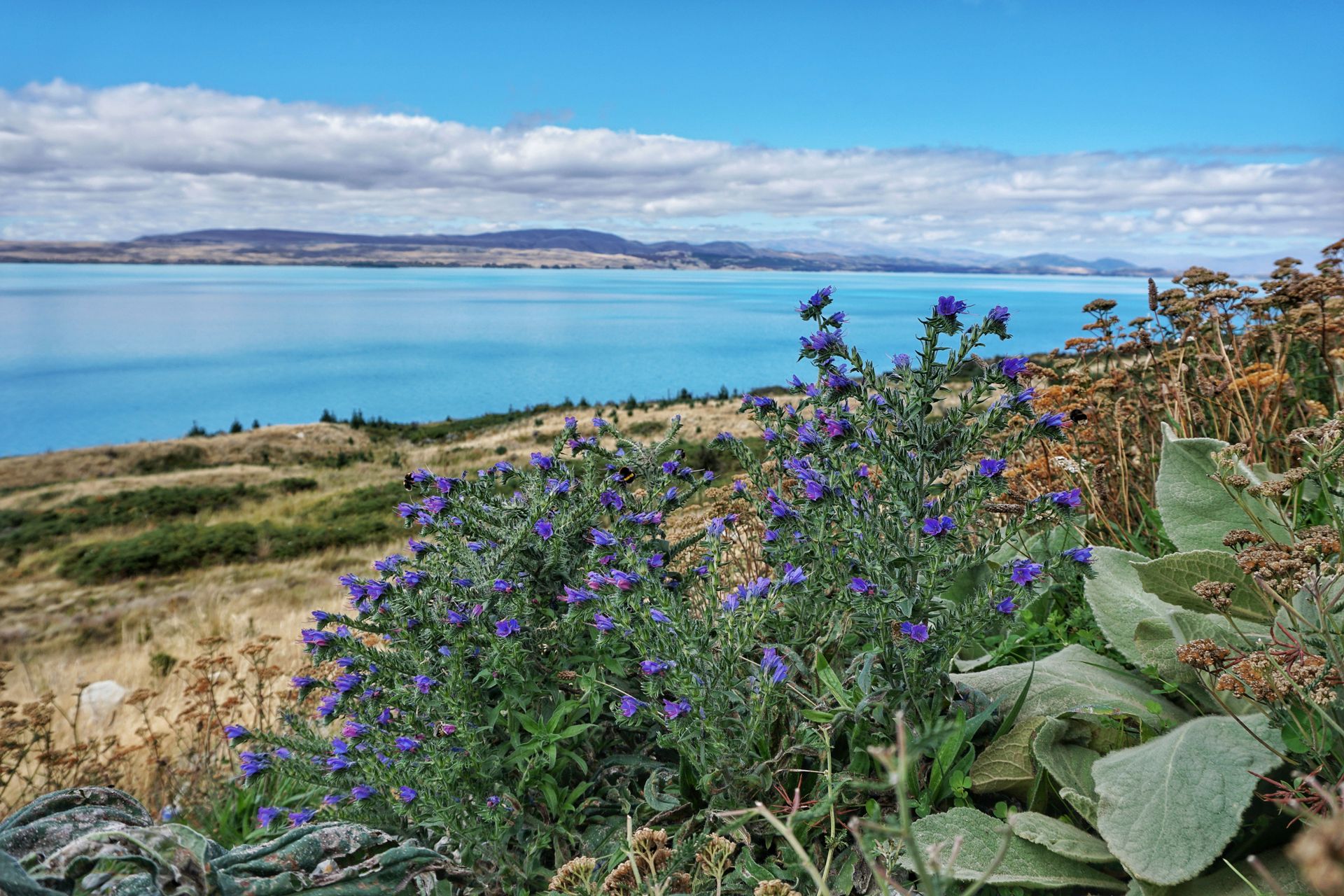
Arriving at Mount Cook, we spent two beautiful days with perfect weather hiking, or rather climbing stairs. Originally, we wanted to do a hike to the Hooker Valley and its glacier, but the heavy rains of previous days had caused a landslide that made the path impassable. So we climbed a mountain on the other side of the valley, up what felt like a thousand stairs, until we could touch the clouds, and were rewarded with a breathtaking view of Mount Cook and the surrounding mountains and glaciers.

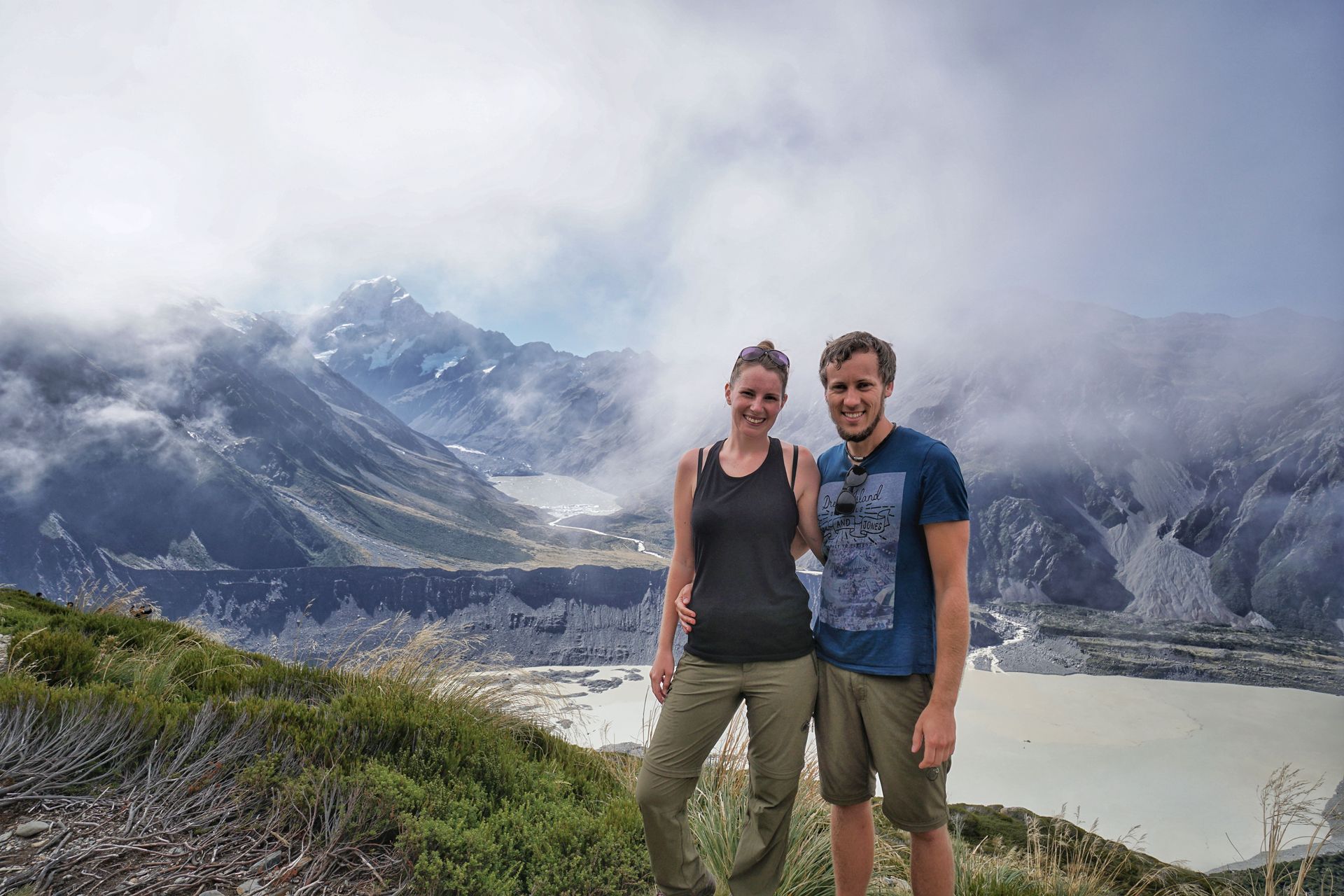
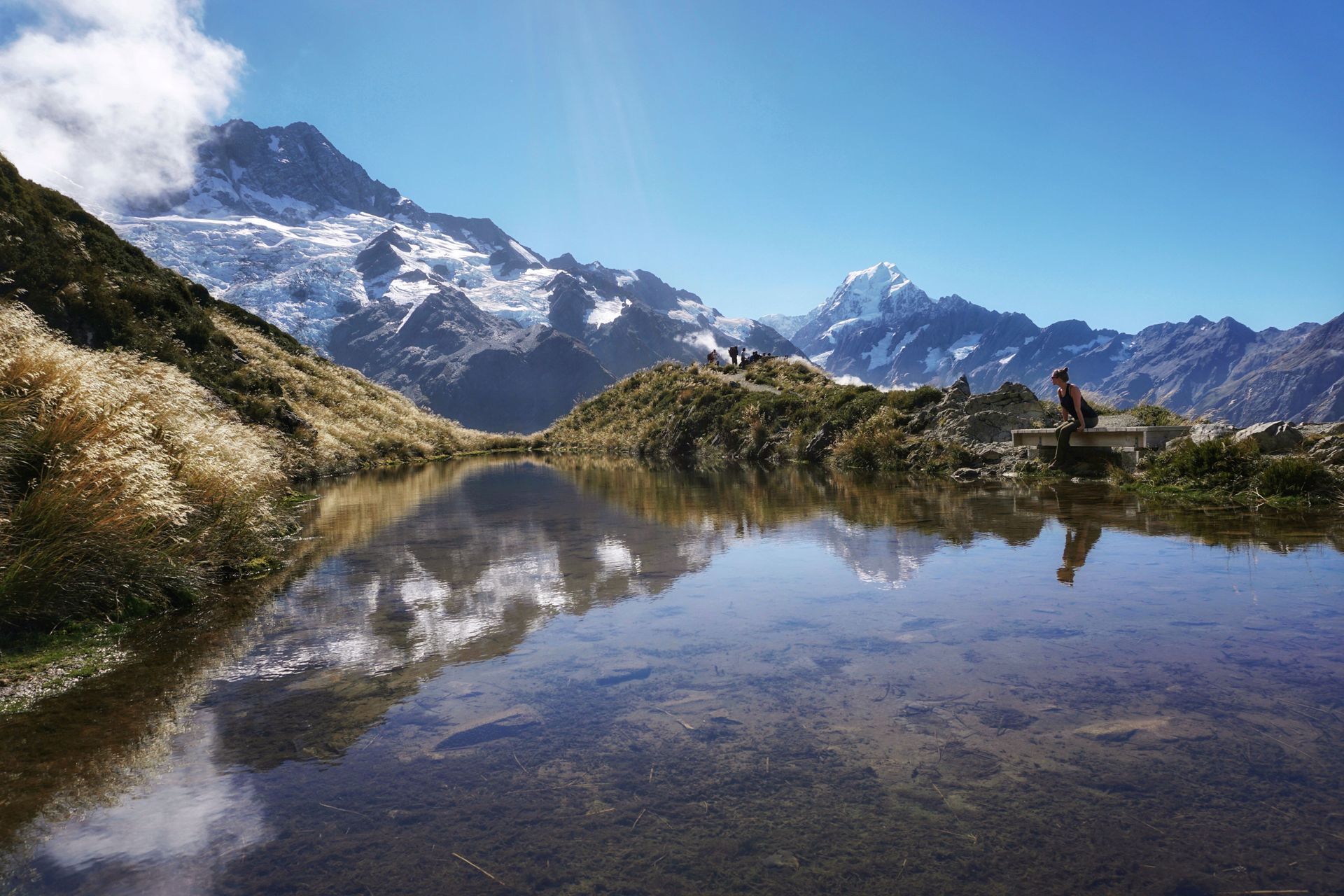
The Mount Cook Visitor Center also impressed us anew with the stories of the climbers who struggled with or ultimately conquered New Zealand's highest mountain, as well as with the exhibited photography and old mountaineering equipment.
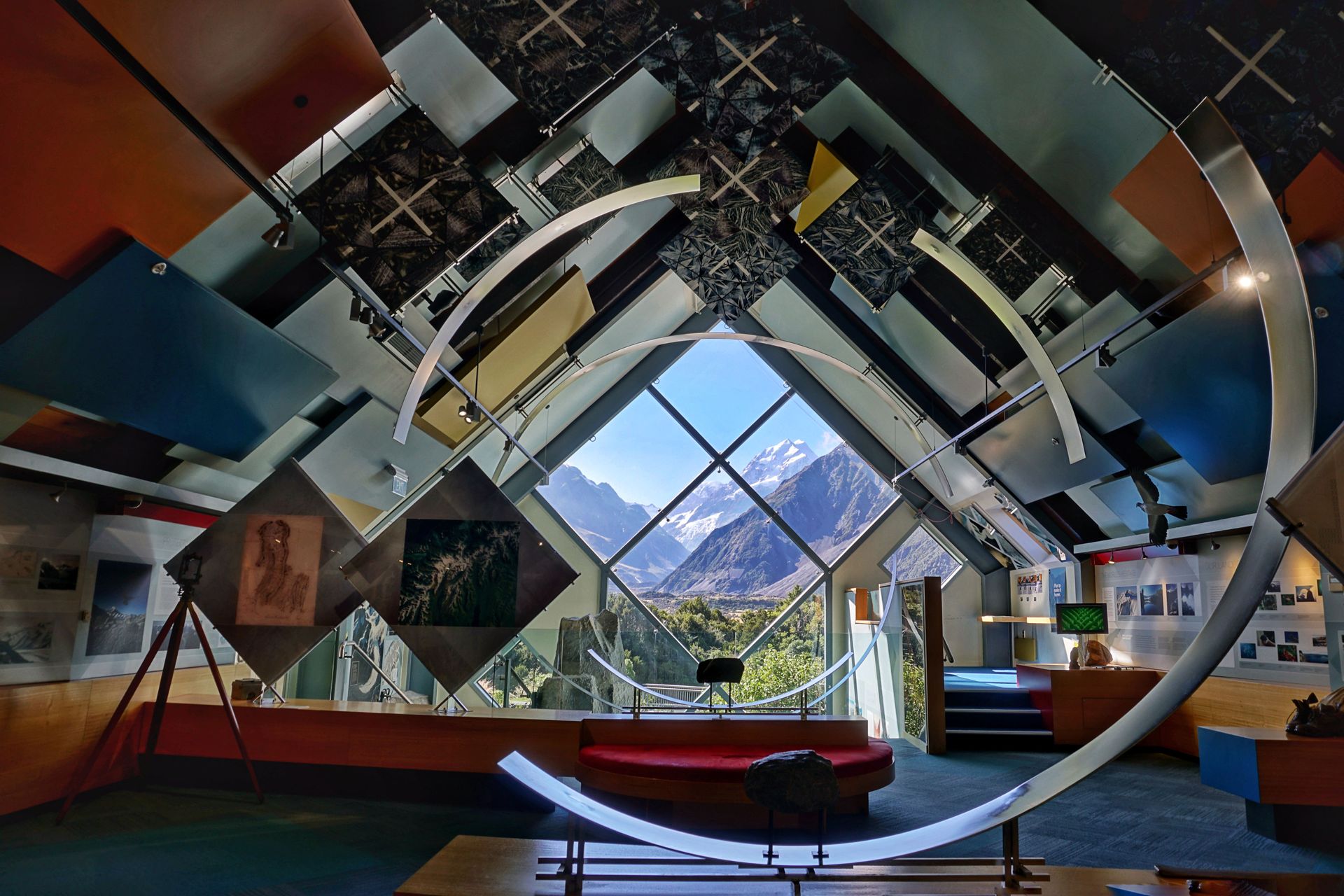
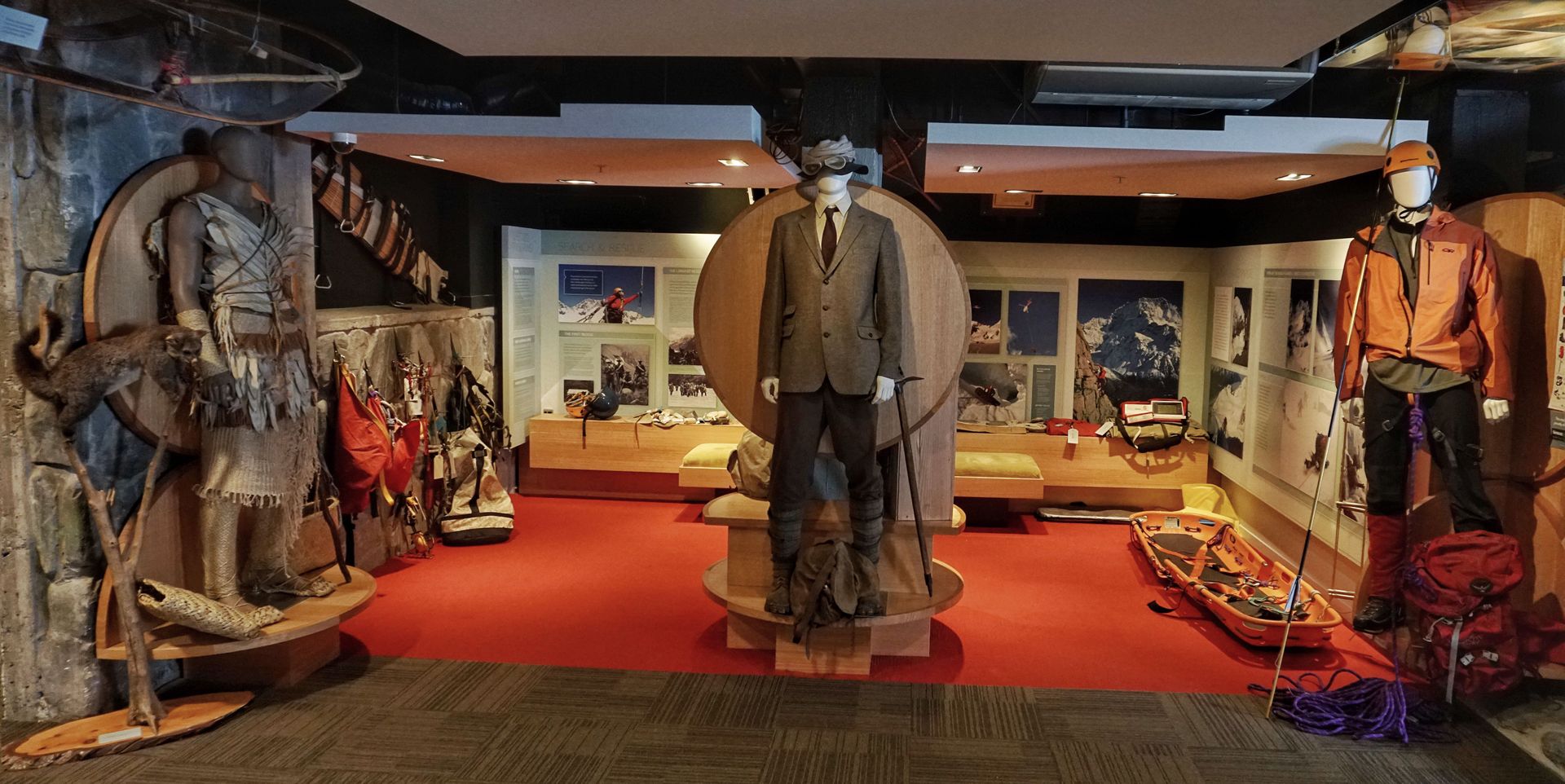
Unfortunately, only the nights here bothered us, because for the first time, but unfortunately not the last time, our tent froze over to a stable igloo overnight, from which you really don't want to crawl out in the morning in freezing temperatures. This was, along with the first orange-yellow trees, a clear sign that autumn has arrived in New Zealand. The positive side: The starry sky couldn't have been clearer and more beautiful.
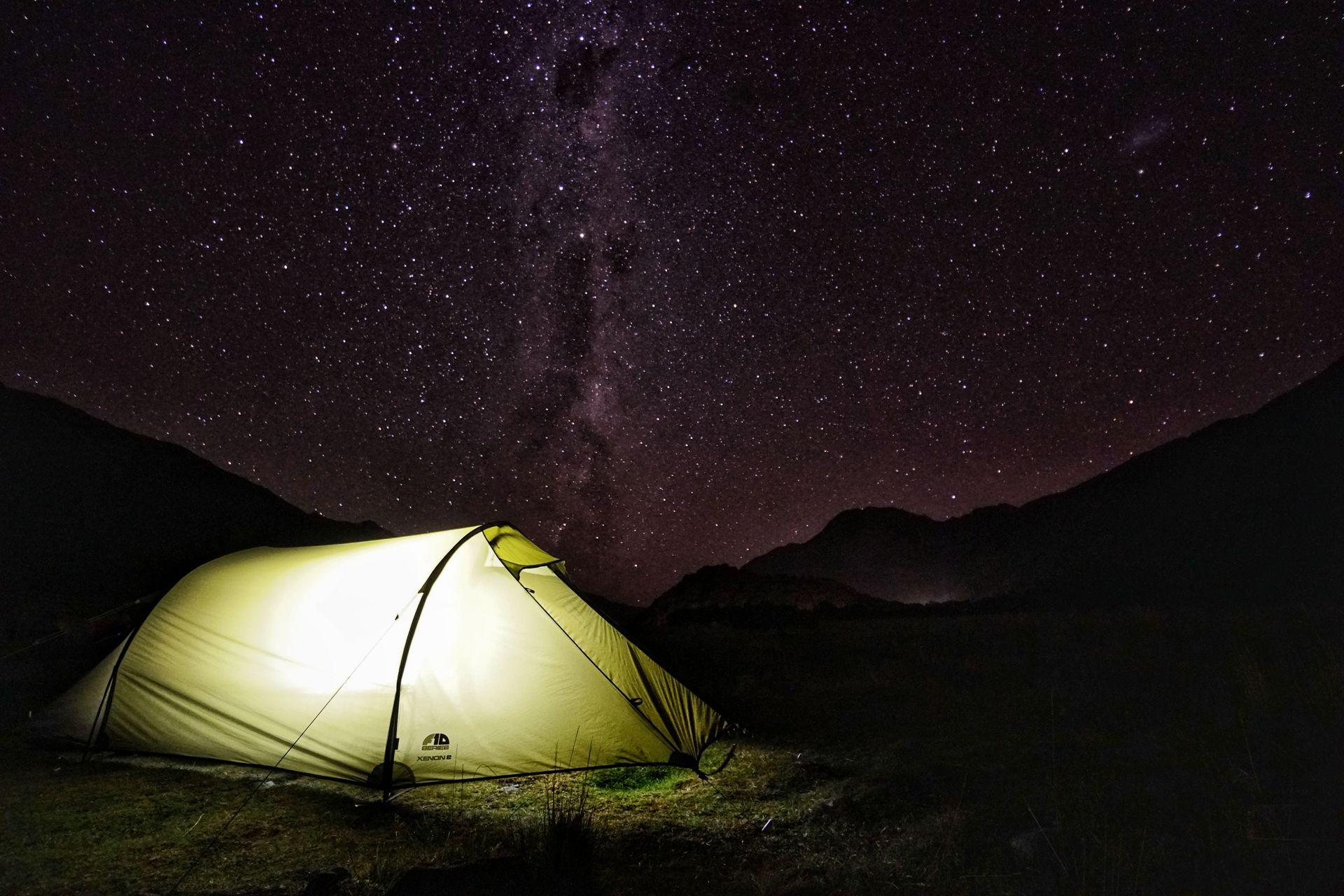
To experience autumn in all its colorful glory, we continued to Wanaka, a small town on Lake Wanaka, surrounded by mountains and beautiful deciduous forests. On the way, we made a detour to "Mini-Bryce," a sandstone rock formation that reminded us a lot of the national park in the USA. Somehow, you can find a piece of every other country in New Zealand.


In Wanaka, we tried to avoid the tourist crowds as best we could, which admittedly prevented us from some beautiful hikes, but also showed us unexpectedly beautiful corners of the region. Of course, we had to visit the famous Wanaka Tree and make sure it was still there, but otherwise, we enjoyed our time in the forests, at nearby Lake Hawea, and at the Blue Pools. Admittedly, visiting the Blue Pools, a turquoise blue river flowing through a deep gorge, was a feast for the eyes, but the nasty sandflies there ate us alive. About sandflies: These spawns of hell are insect-sized flies that particularly love the blood of humans and cause an endless itching with their bites. We know that you're supposed to love all living beings, but no one really needs these creatures.

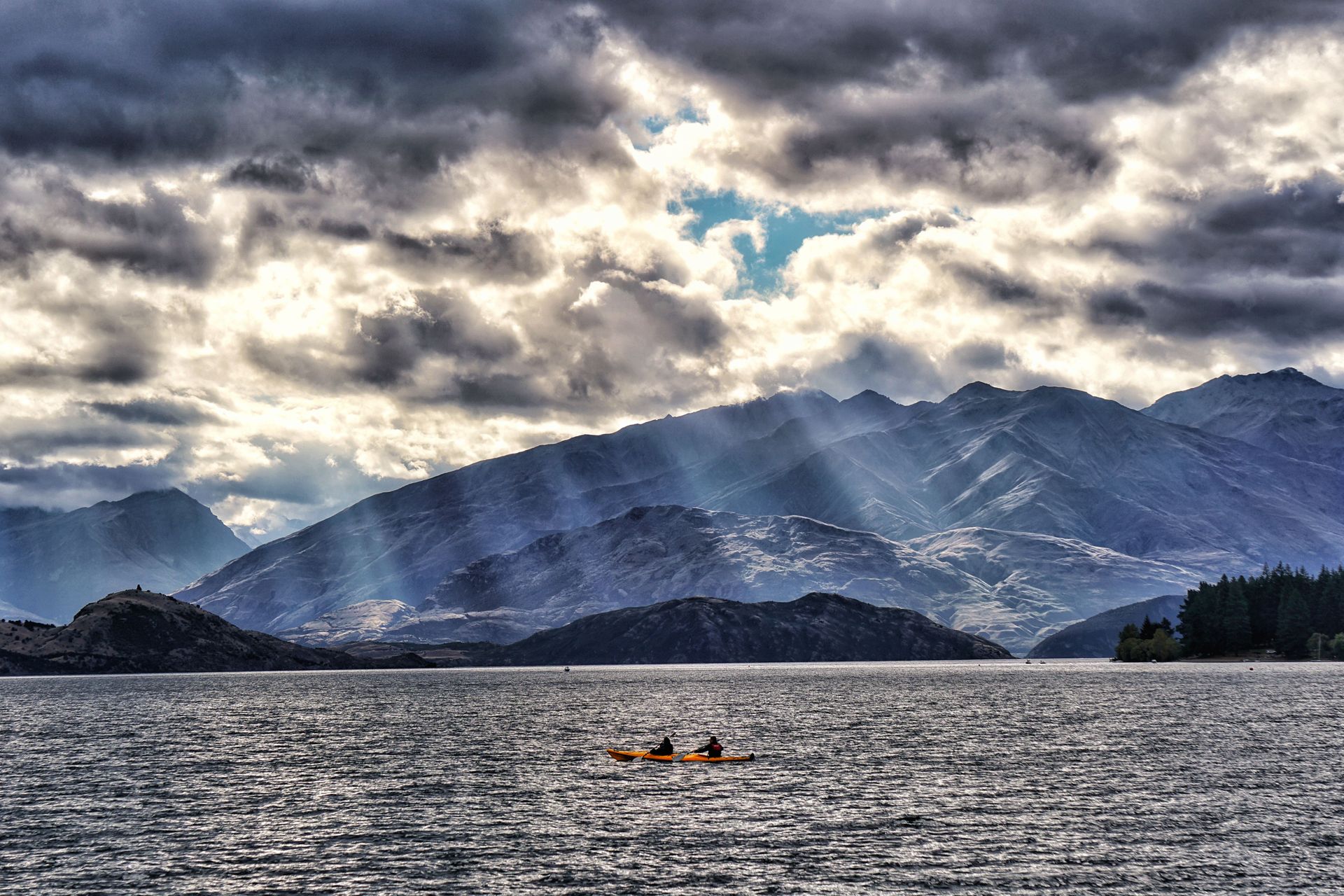
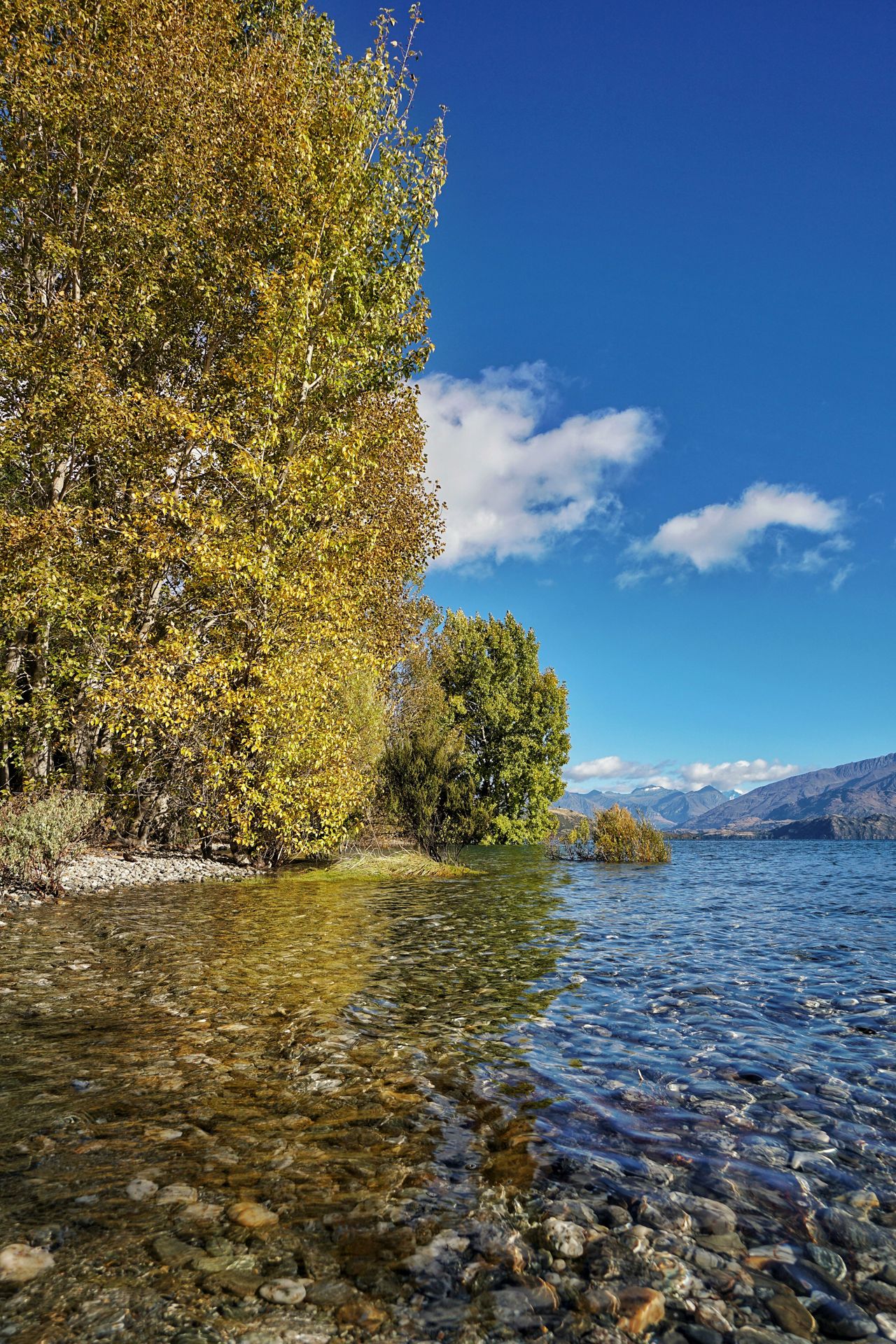

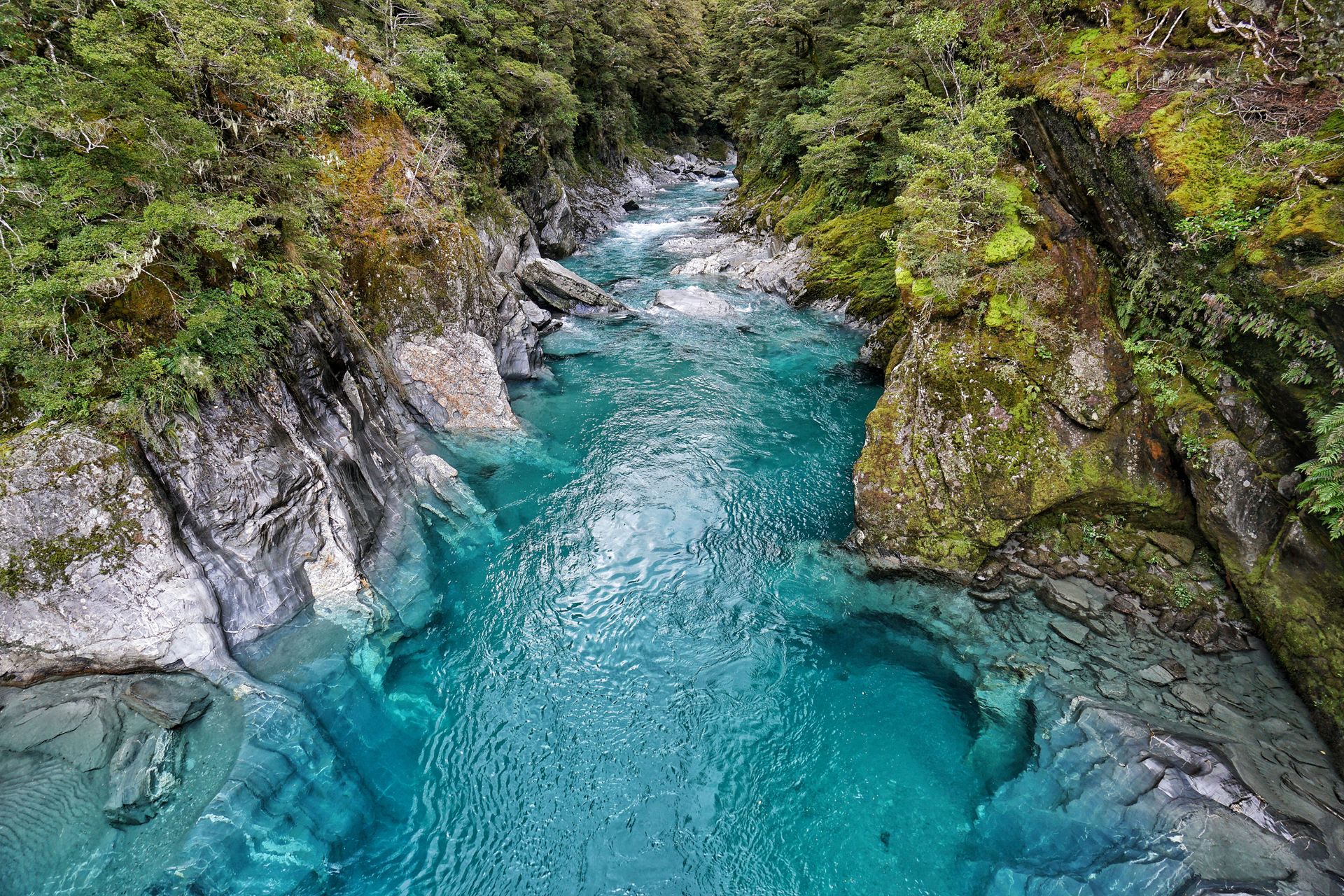
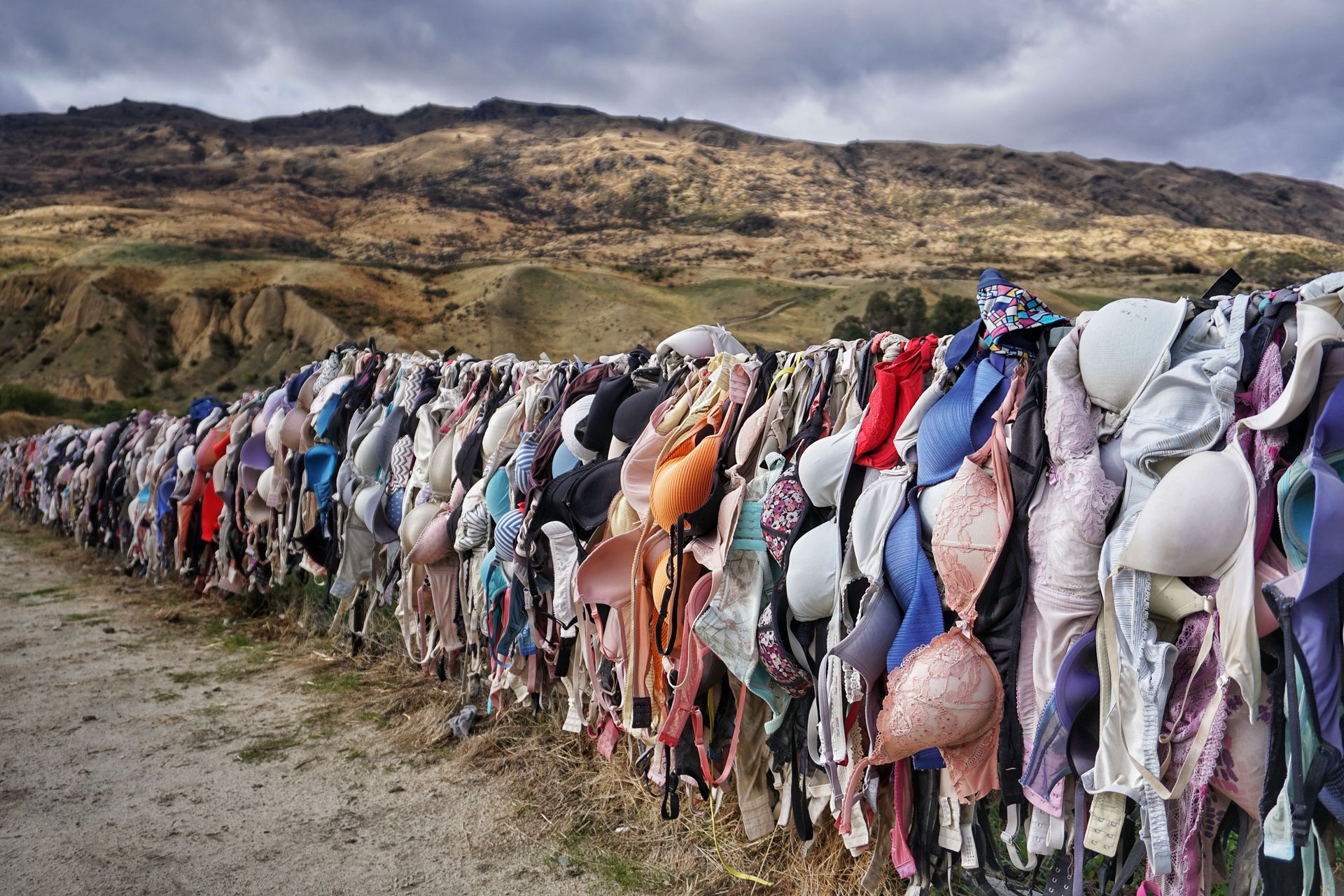
But back to the beautiful things, because there are plenty of them here. An unexpectedly beautiful experience was our visit to Arrowtown. This village near Queenstown is famous for its gold mining past and takes you back to life in the 19th century. Both the city center with its saloons and the old Chinese workers' gold mining village are well preserved and provide an amazing insight into very hard times. Since we have been living mainly in a tent for a long time now, we could imagine quite well the living conditions of the gold miners, who slept in tiny huts without electricity or water, even in winter.
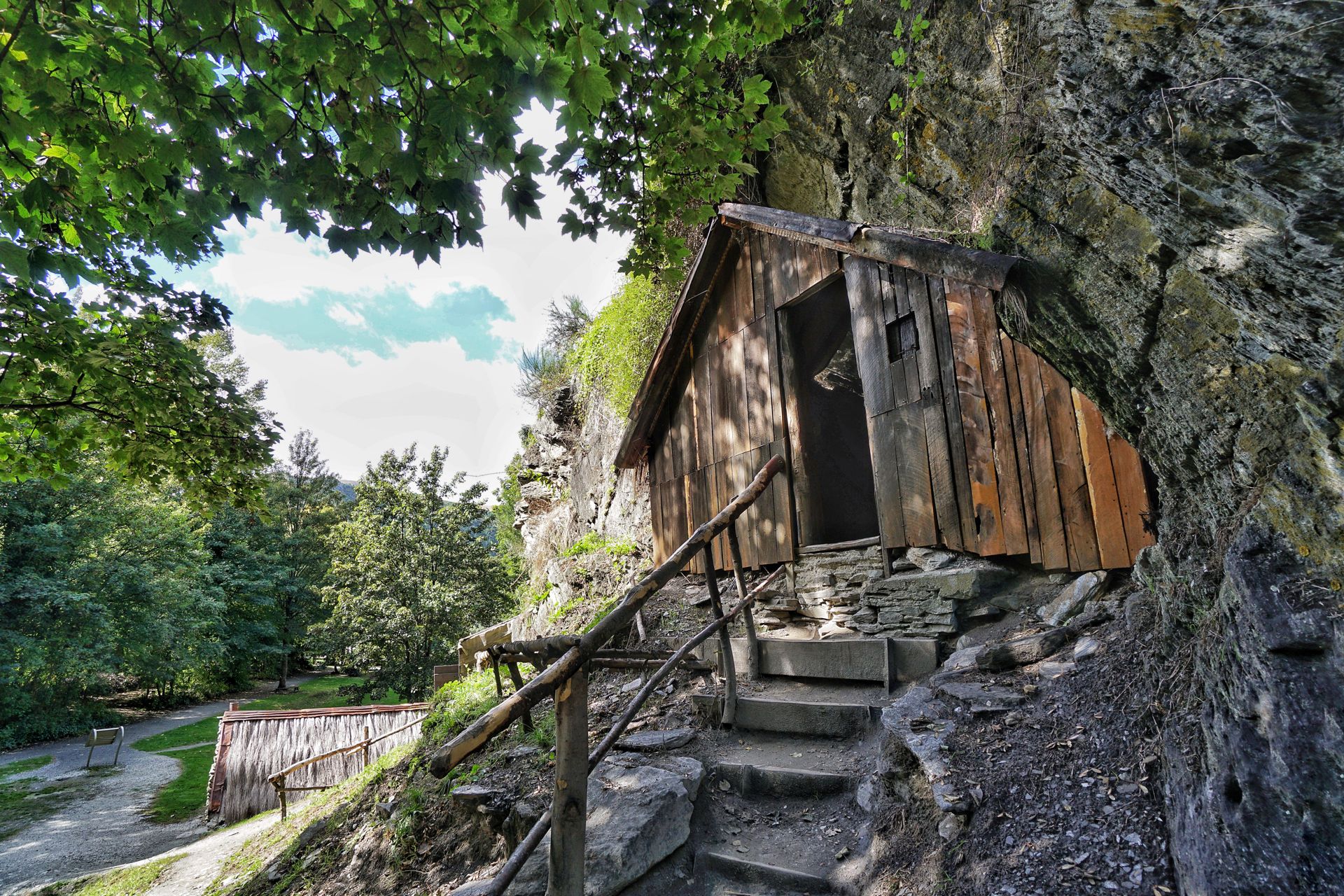
On our campsite at Moke Lake in the mountains near Queenstown, we once again experienced firsthand what such a simple life, like that of the gold miners, brings with it. Here, we could enjoy real seclusion and silence, but we also had to endure another freezing night in sub-zero temperatures. Fortunately, unlike the gold miners, we have high-quality sleeping bags in which we will at most lose a finger, according to the saleswoman, but we won't freeze to death.
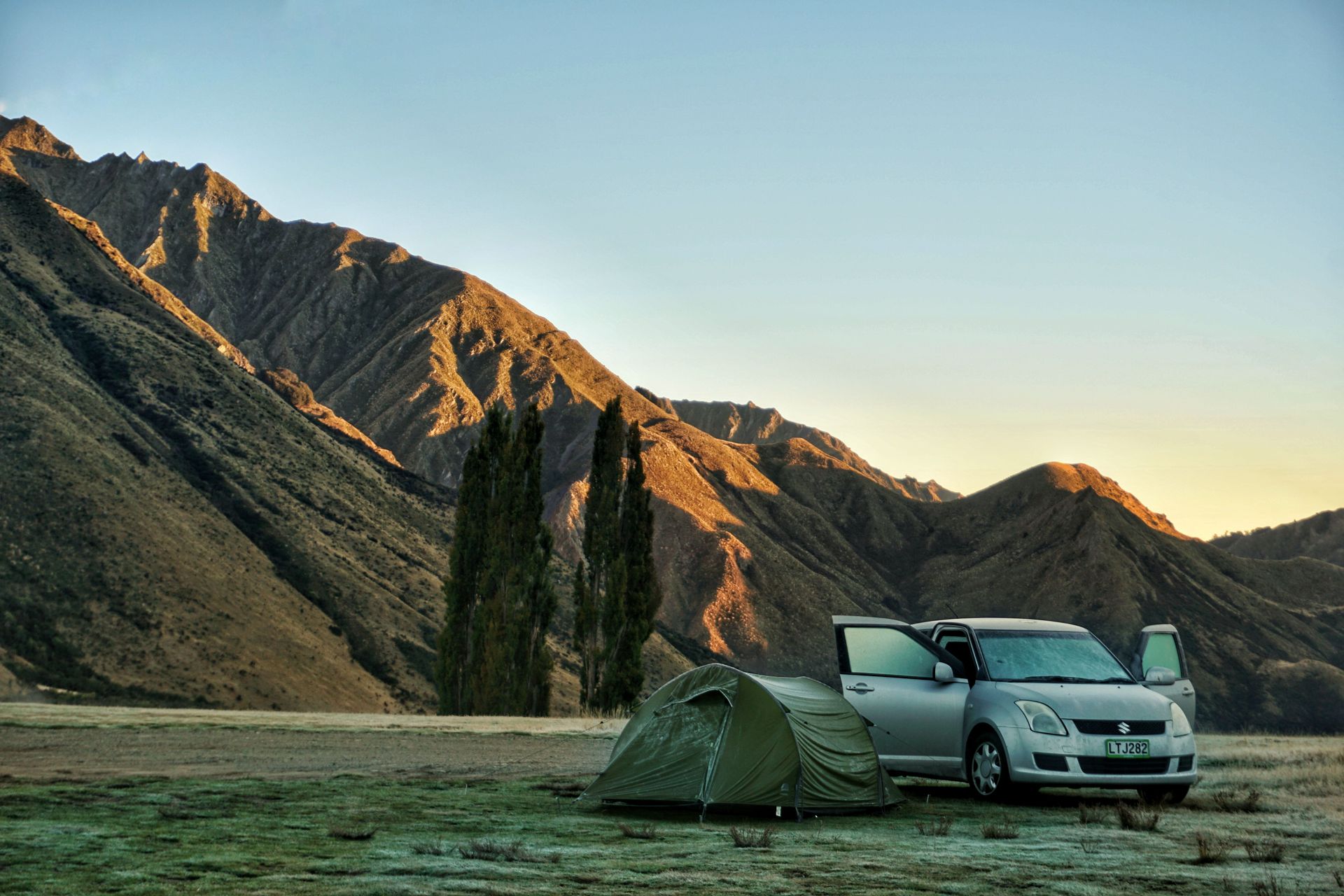
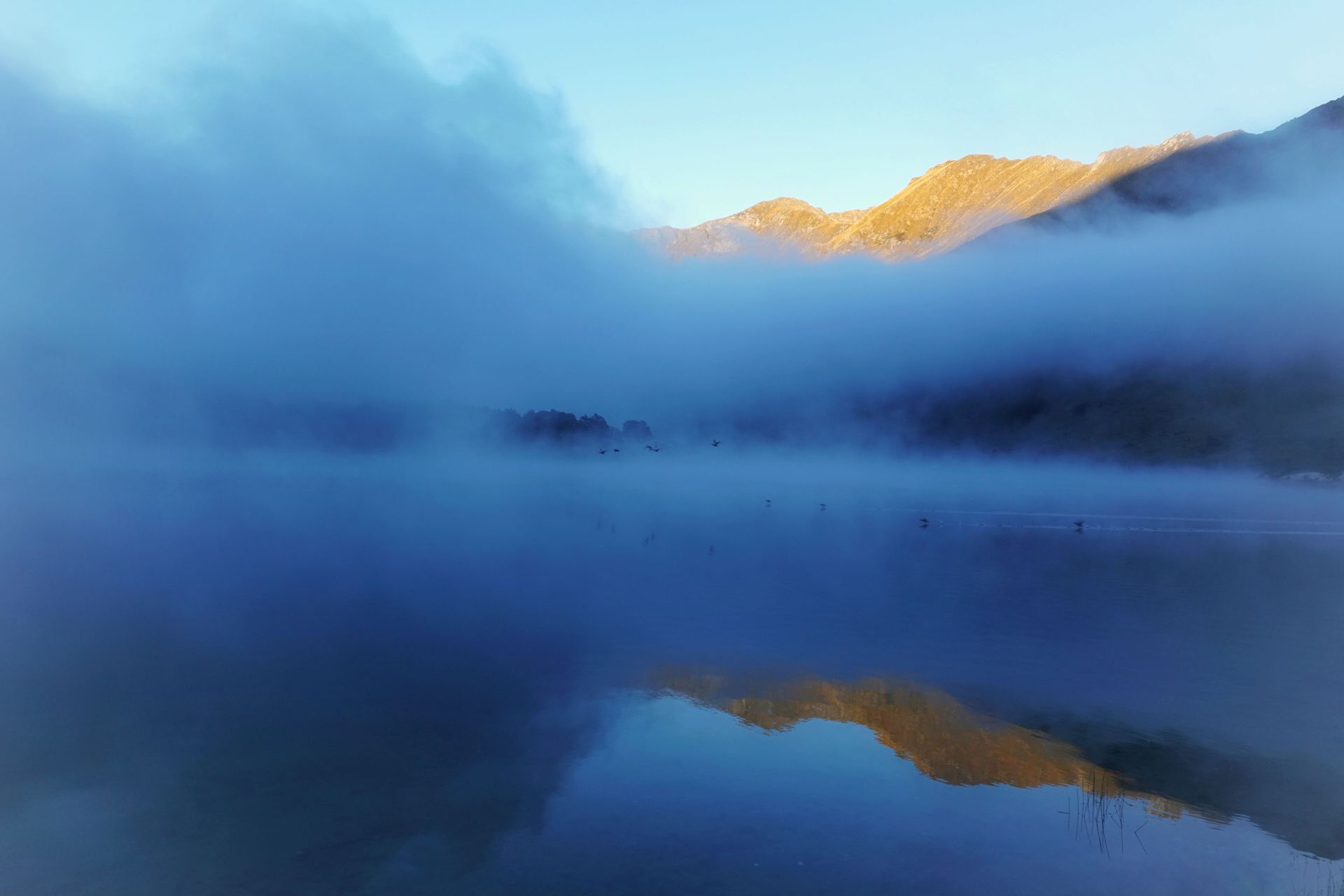
Since Queenstown is completely overcrowded with tourists, we avoided it in the following days and instead hiked to Queenstown Hill and drove along the panoramic road along Lake Wakatipu to Glenorchy. On this breathtaking route, you can see the blue lake from several perspectives until you see the high, snow-covered mountains rising behind the lake. Then you are almost arrived in Glenorchy. There, we explored the surroundings and especially went on a long walk through Glenorchy Lagoon with its autumnal forest. At the campsite, we met a super nice backpacker from Corsica, who has been hiking through New Zealand and mainly exploring the country off the beaten path on foot for the past 4 weeks. We immediately decided: We want to do that next time too!
With a heavy heart, we had to leave this beautiful area behind, with the resolution to spend much more time there next time, and started the journey to Milford Sound.
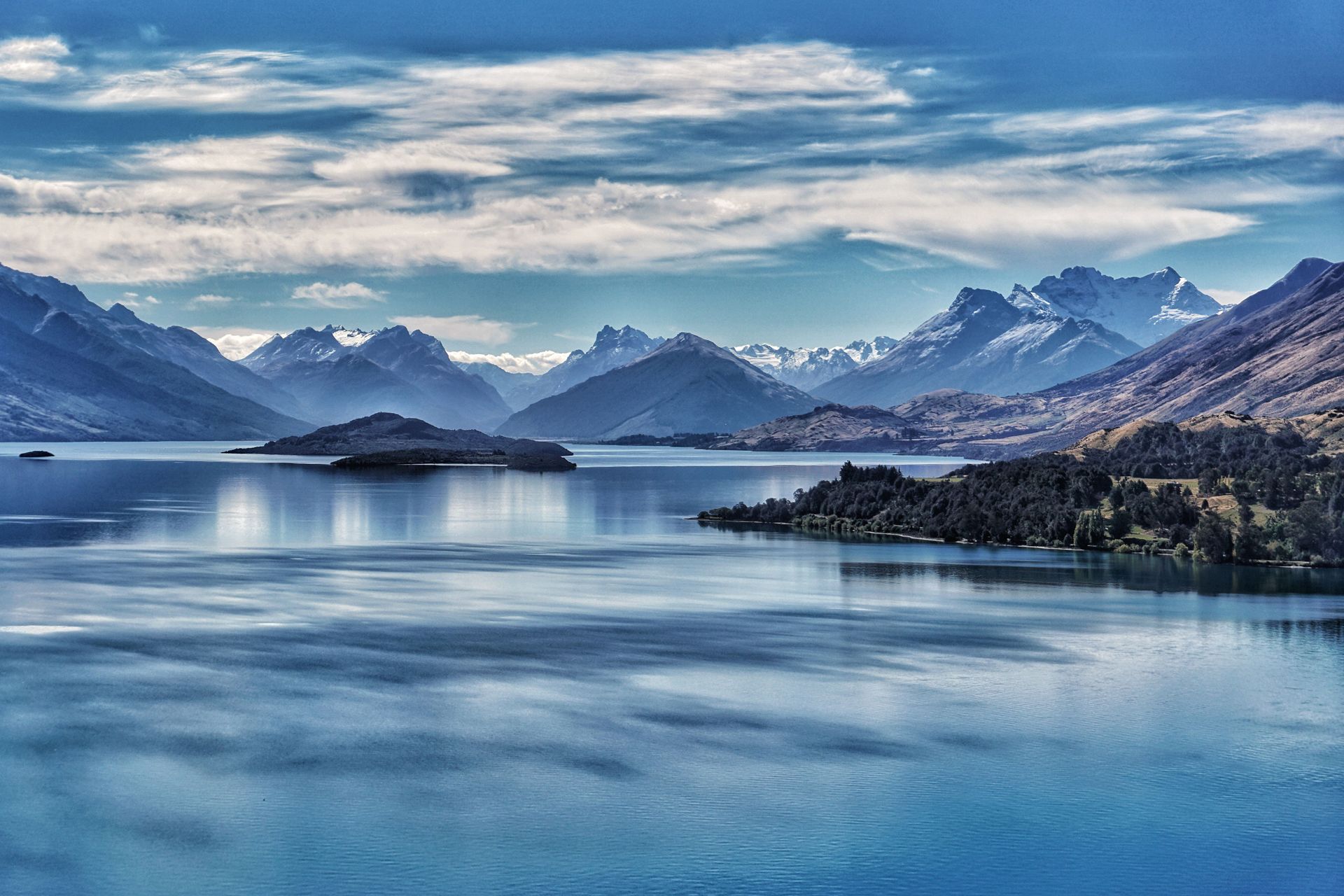



Since we only had a few days left before we had to say goodbye to our little jukebox in Christchurch, we started the journey back along the East Coast of the South Island. "Journey back" somehow sounds negative, but on the coast, some real highlights were still waiting for us. One of the most beautiful experiences we had was at Nugget Point. Knowing that the sun rises in the east, we set out early in the morning to Nugget Point and its lighthouse and enjoyed the sunrise in all its colorful splendor. A beautiful moment in this icy, clear air and peaceful environment. As one of my (Natalie's) favorite quotes from a wonderful movie says: "There is a sunrise and a sunset every day. And you can choose whether you want to see it. You can consciously expose yourself to the sight of this beauty."
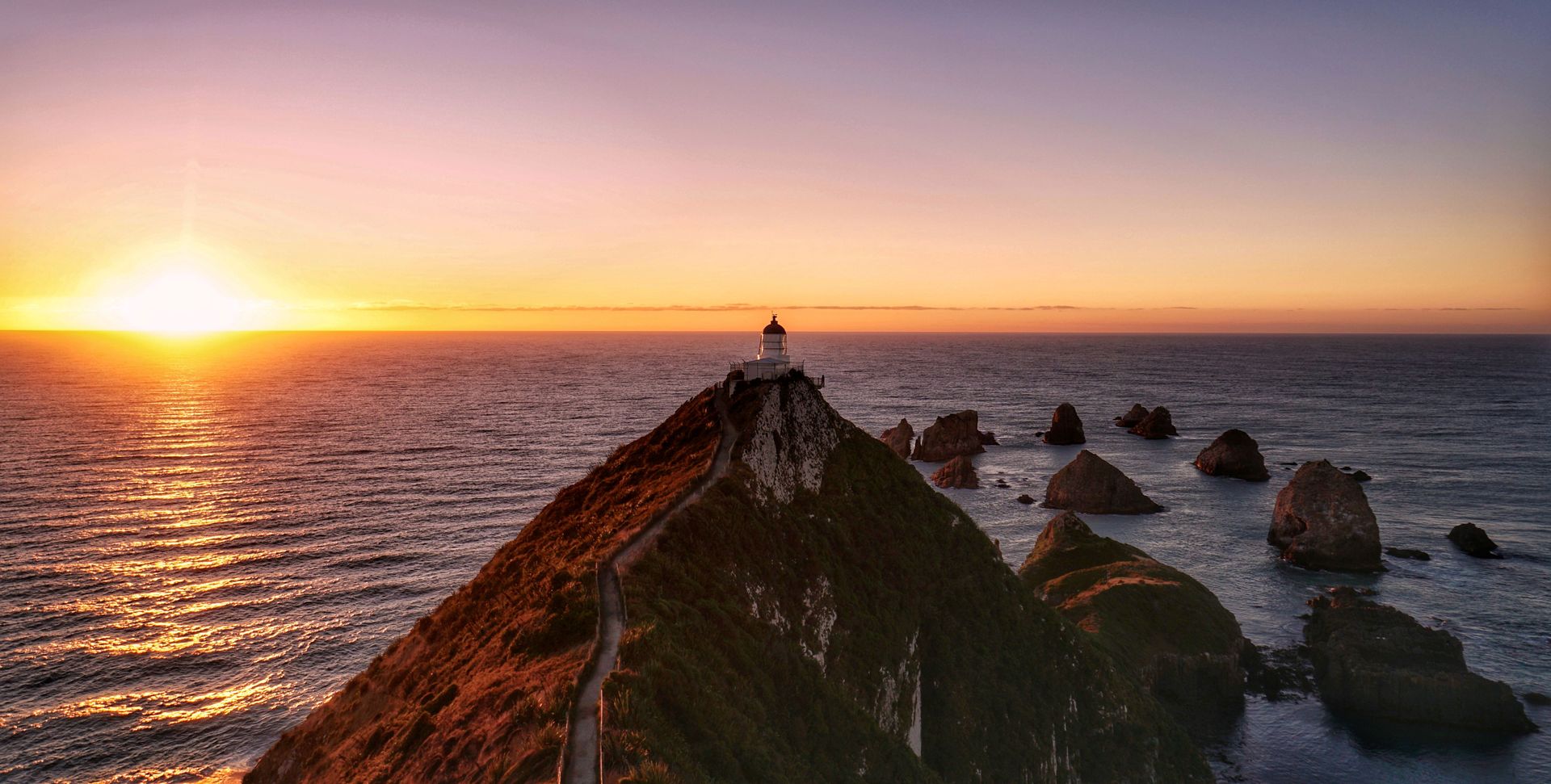
After this morning, we explored the Otago Peninsula near Dunedin, although we only encountered a few of the coastal animals promised to us. We were promised seals, penguins, and albatrosses, but we only saw one seal and a lot of sheep. However, the little adventurer in us was satisfied by the Tunnel Walk along the coast, where you enter a small tunnel at one end of the high cliffs and come out at the beach at the other end after many steps.
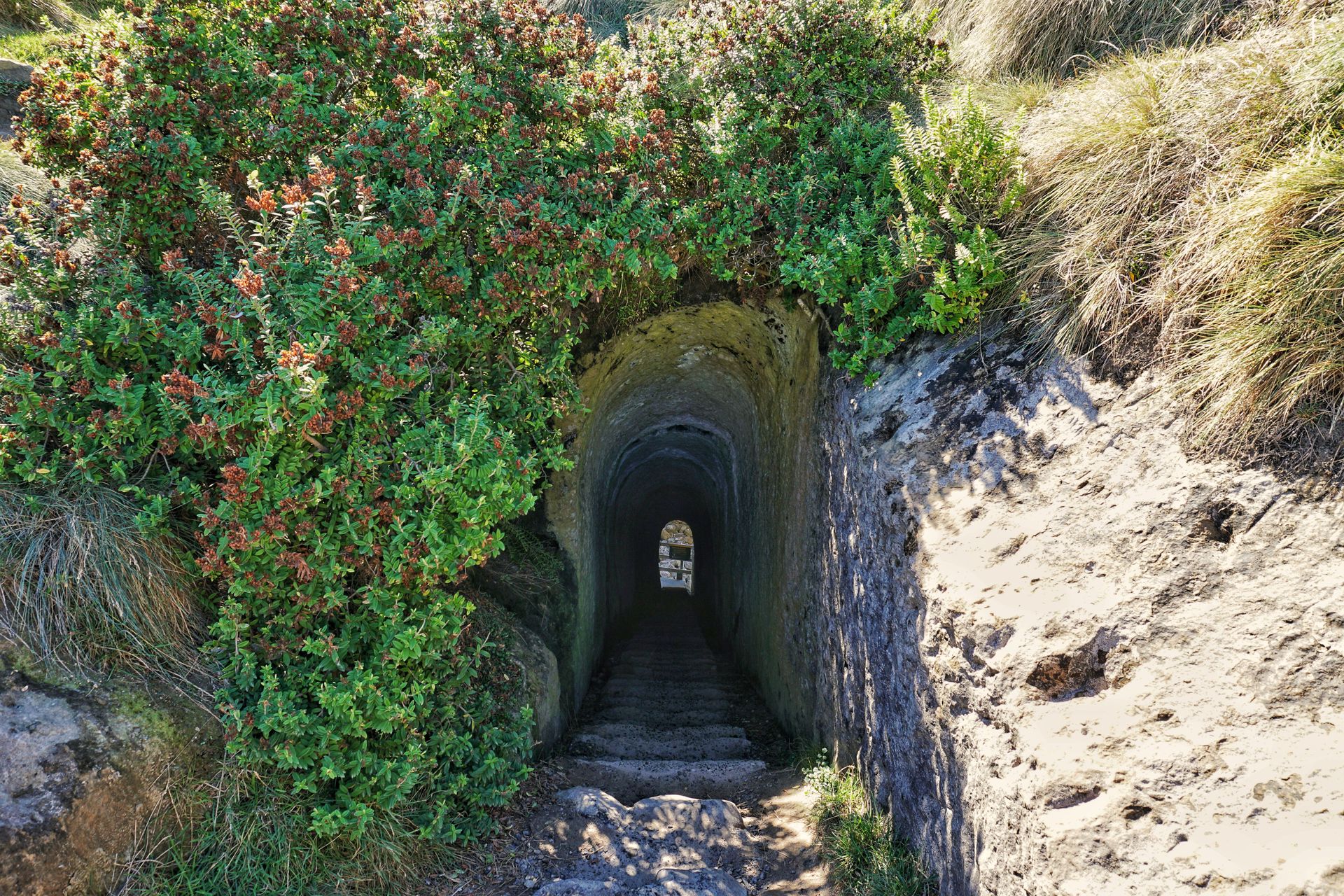

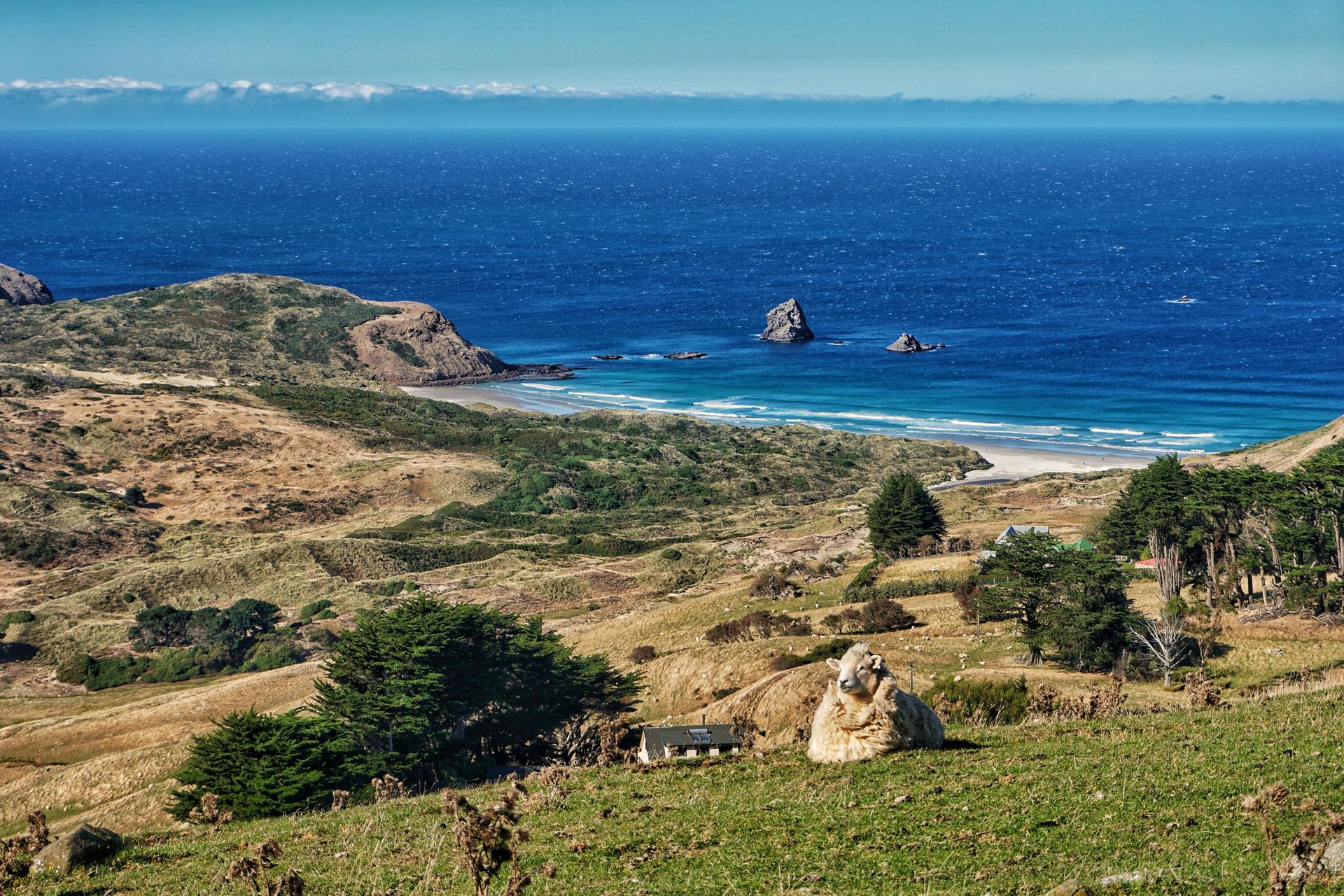
The disappointment about the few animal sightings was immediately made up for, as at Kapiti Point further north, we were delighted during the next hike with the sight of playful baby seals and a yellow-eyed penguin.
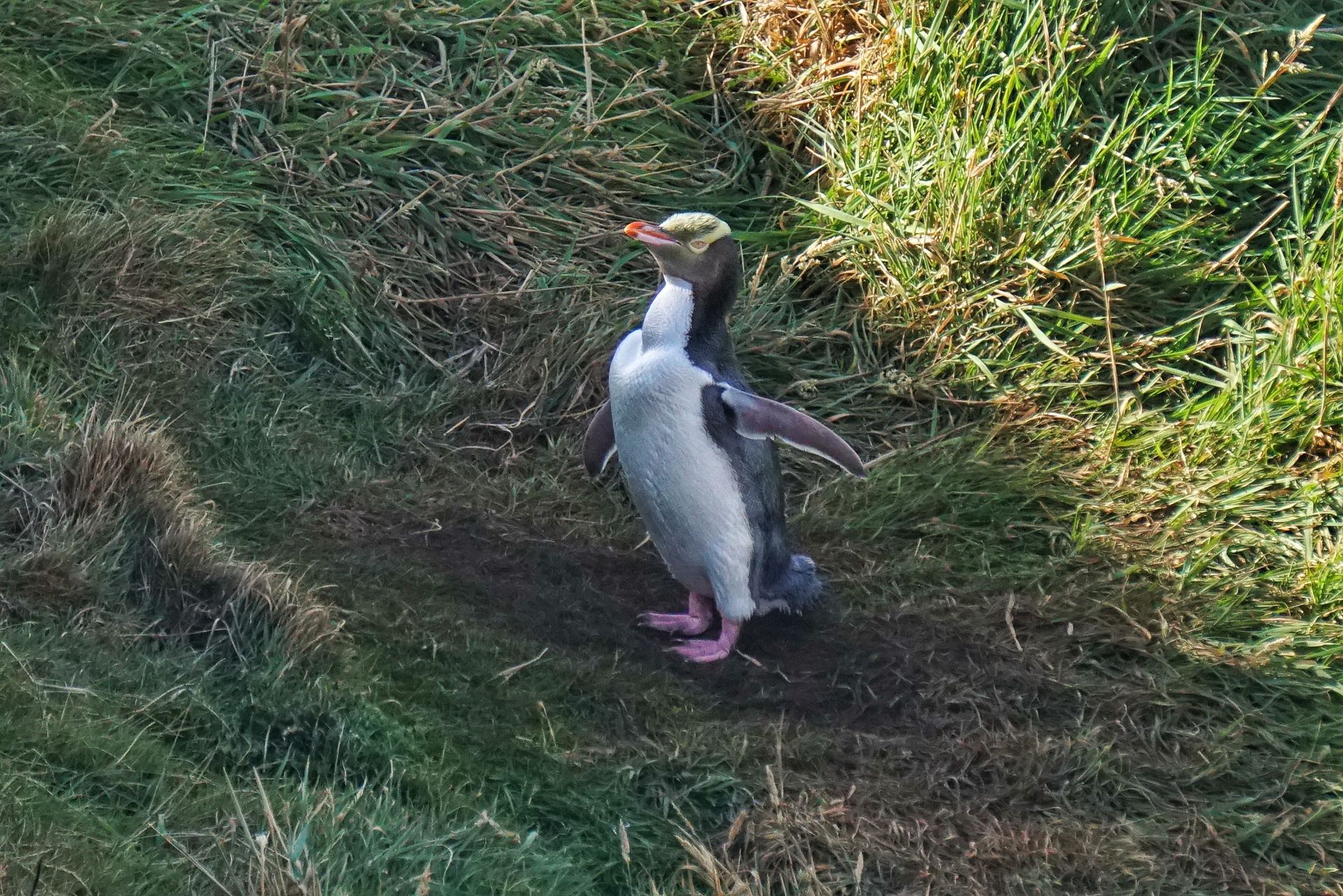
We also made a brief visit to the Moeraki Boulders and could see with our own eyes how much such natural phenomena are damaged by inconsiderate tourists. The Moeraki Boulders are huge, perfectly round stones that have been formed in the sea over millions of years and have been pushed from the seabed to land due to tectonic plate movement. There, they were washed out of the ground by the sea and now lie around on the beach like large marbles. Of course, it's a lot of fun to climb on these impressive stones and take pictures, but there are also some very fragile and already cracked stones that you should stay away from. So three years ago, we found our favorite stone, which had cracked open, revealing all the layers of its formation, similar to the growth rings of a tree. This time, sadly, we had to find out that due to climbing visitors, it had disintegrated into individual pieces.

After that, we took our final drive in our family member of the past 7 weeks to the Banks Peninsula near Christchurch. This peninsula has an impressively rugged coastline, offering new views around every corner. In a bay, we took a walk on a spit of land, where we almost felt like Moses parting the sea. Afterwards, we strolled through the small, originally French coastal town of Akaroa with its beautiful houses and flower-filled gardens and treated ourselves to a last portion of fish and chips from a newspaper in New Zealand.
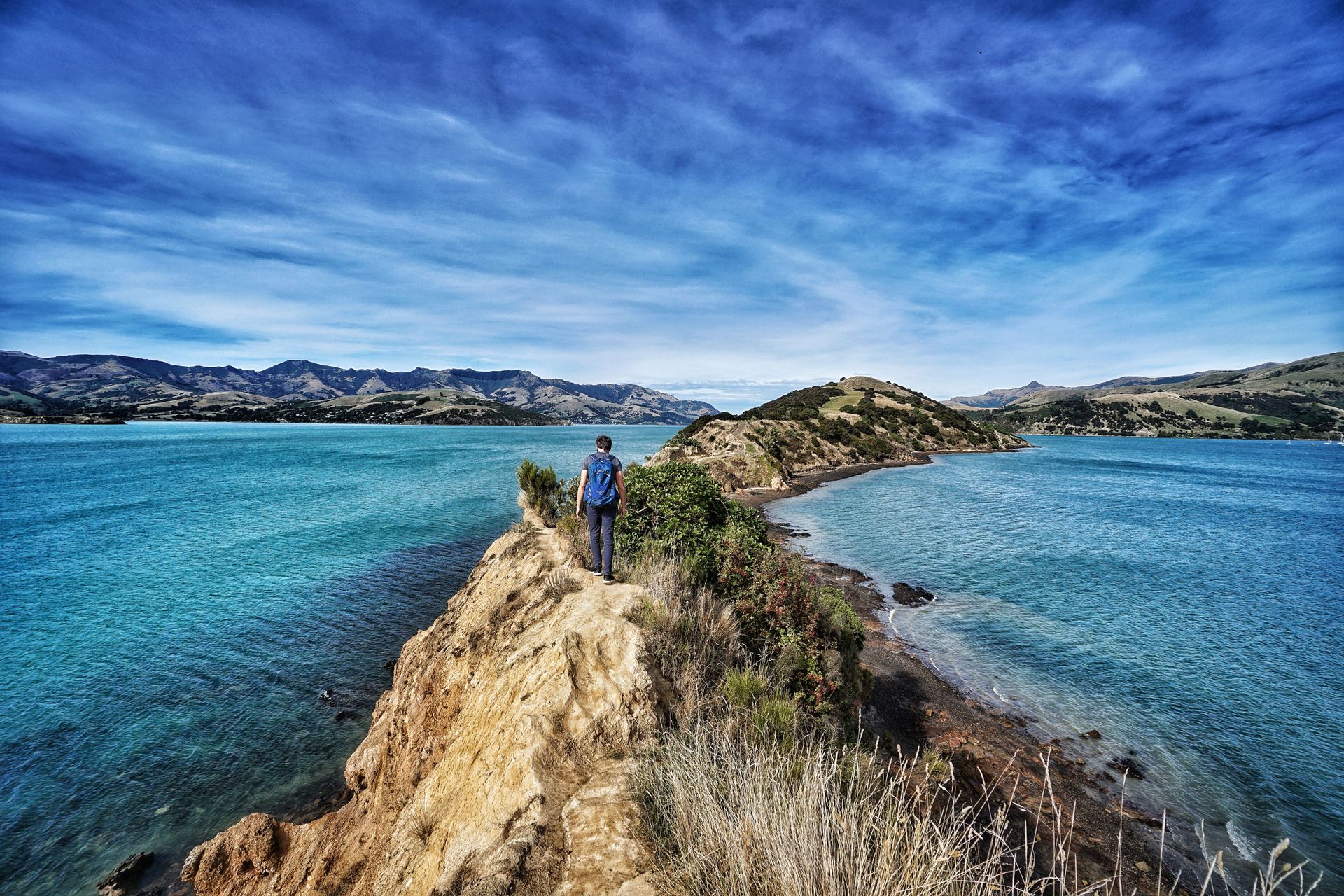

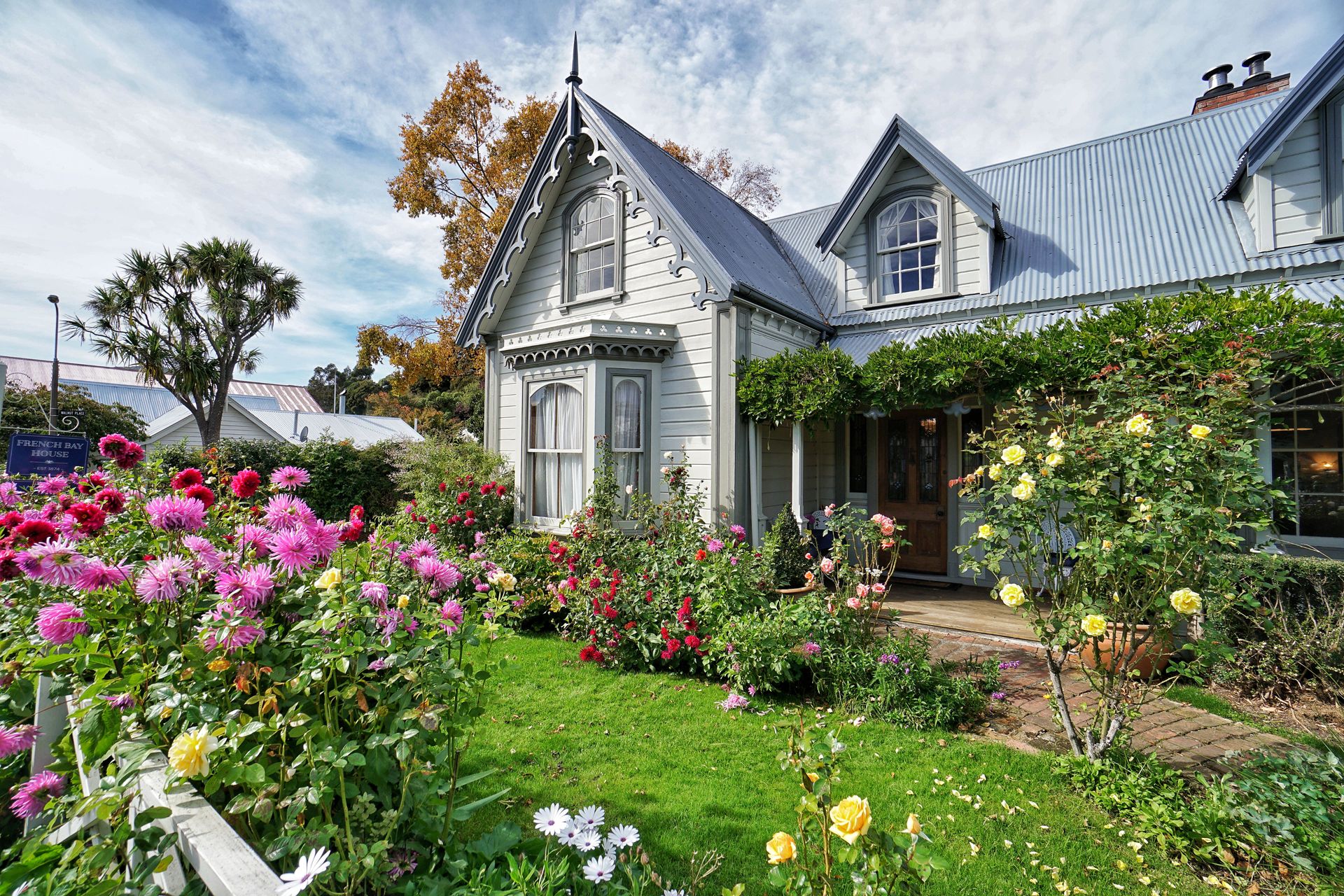
Unfortunately, it was time to say goodbye to New Zealand. Christchurch made it a little easier for us, as 8 years after the devastating earthquake that destroyed large parts of the city, it still looks like one big construction site. The houses over whose future has already been decided have been demolished and are being replaced by modern high-rise buildings or residential complexes. In between, however, you can still find many ruins from which not even the furniture or food has been removed. If you didn't know better, you would think that time has stood still here since then.
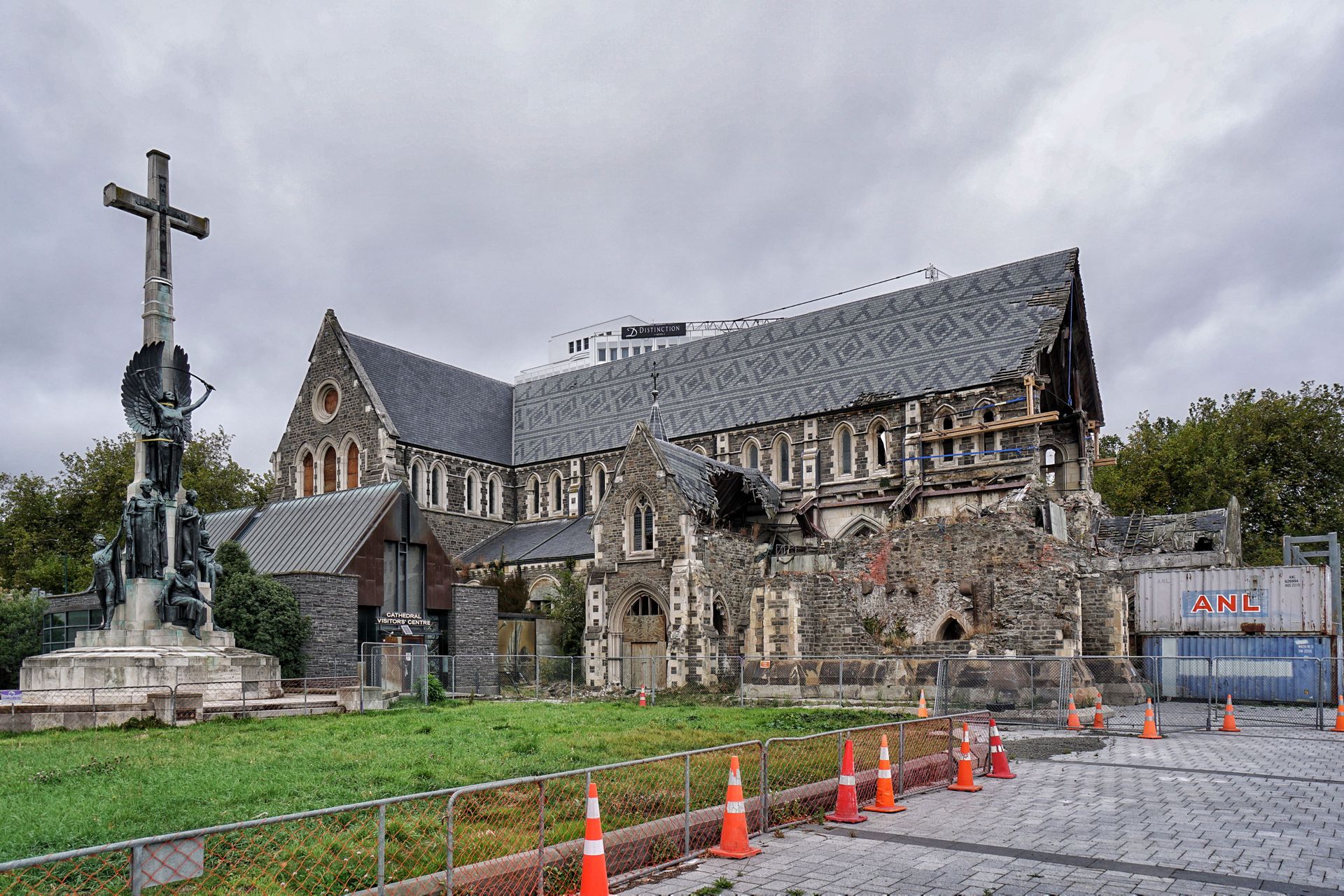
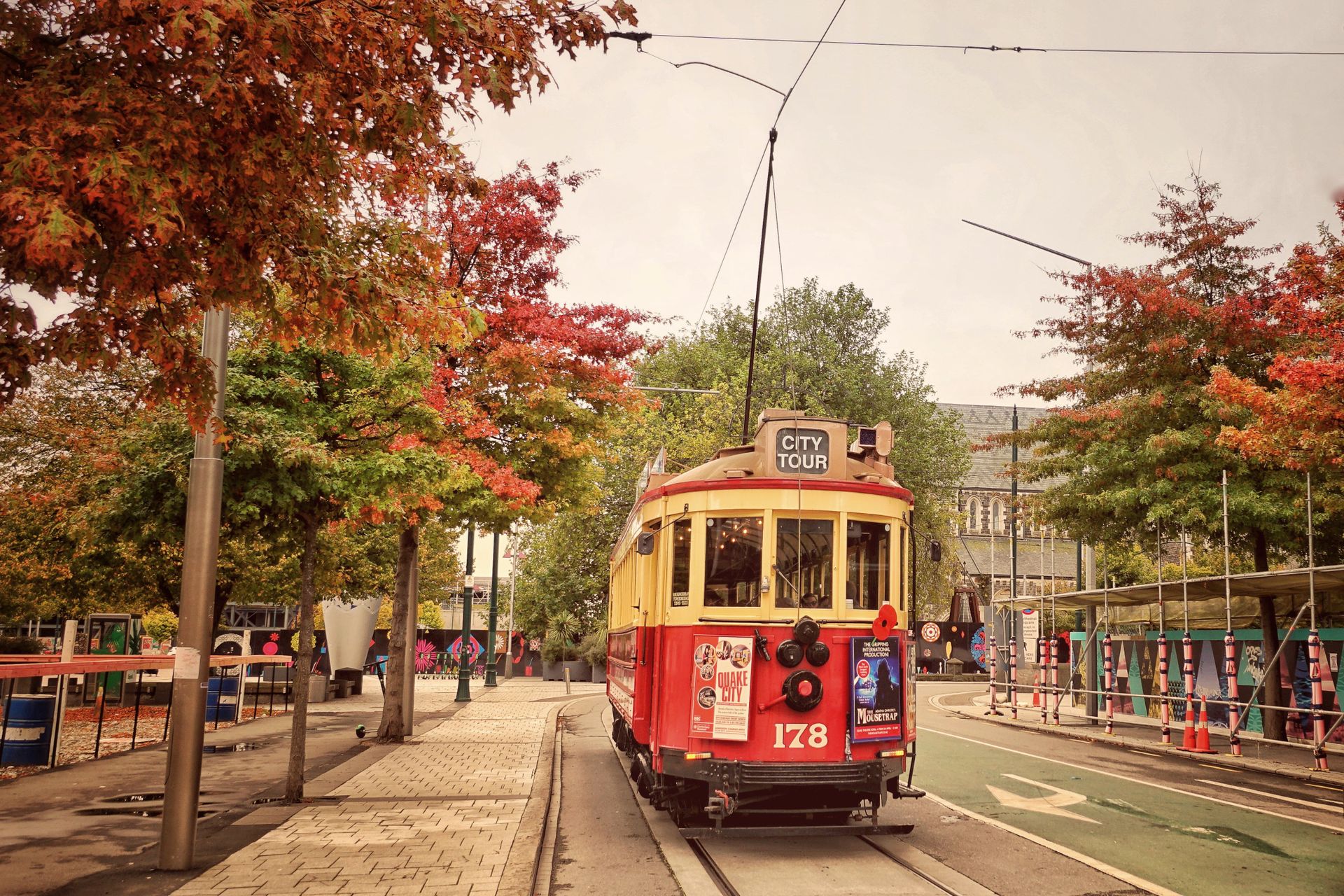
For us, however, the time of our journey continues relentlessly, and therefore, we wanted to leave New Zealand behind and make room for new countries, new cultures, and new experiences. New Zealand has once again enchanted us and drawn us into its peaceful, wild, and diverse spell. The atmosphere in this country on the other side of the world is hard to describe, but I think pure bliss describes the feeling best that remains with you after the visit.
Song of South Island: Autumn Tree - Milo Greene
သတင်းလွှာကို စာရင်းသွင်းပါ။
ဖြေ

ခရီးသွားအစီရင်ခံစာ နယူးဇီလန်
